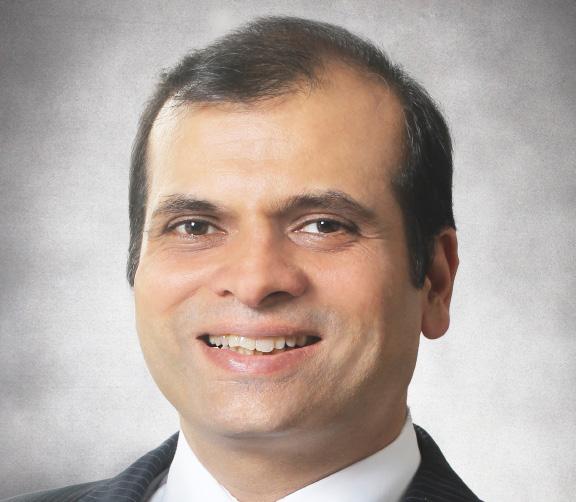











































































































































 Jai Mrug has built Mego to help enterprises use analytics and simulation to spot snags in processes and boost business growth.
Jai Mrug has built Mego to help enterprises use analytics and simulation to spot snags in processes and boost business growth.
M76 ANALYTICS FOR BUSINESS EXPERT SYSTEMS
DECEMBER 2022 FOR PRIVATE CIRCULATION ONLY
JAI MRUG Founder and CEO, M76 Analytics.
asia.biznesstransform.com

MANAGING DIRECTOR
Tushar Sahoo tushar@gecmediagroup.com
CHIEF EDITOR
Arun Shankar arun@gecmediagroup.com
CO-FOUNDER & CEO Ronak Samantaray ronak@gecmediagroup.com
GLOBAL HEAD, CONTENT AND STRATEGIC ALLIANCES

Anushree Dixit anushree@gecmediagroup.com
EXECUTIVE DIRECTOR GEC MEDIA GROUP
CO-FOUNDER, BUSINESS TRANSFORMATION ASIA Sundip Sibal Sundip@gecmediagroup.com
GROUP SALES HEAD Richa S richa@gecmediagroup.com
PROJECT LEAD
Jennefer Lorraine Mendoza jennefer@gecmdiagroup.com
SALES AND ADVERTISING
Ronak Samantaray ronak@gecmediagroup.com
DIGITAL TEAM Vijay Bakshi - IT Manager
DESIGNED BY Creative Lead
Ajay Arya
Designer
Rahul Arya
Assistant Designer
Vikas Chandra
PRODUCTION, CIRCULATION, SUBSCRIPTIONS info@gecmediagroup.com
Home grown expert systems
In our lead feature this month, we look at how Jai Mrug has set up M76 Analytics to offer solutions that can help enterprises create business strategies by analysing opportunities and risks and related costs using end-to-end data modelling.
Between 2008 and 2012 Jai Mrug worked with a large Indian IT services firm in the United States as the pre-sales head of the company’s supply chain analytics services in the country. He would often see that there were veritable gaps in the products and solutions being offered by the companies and what the customers needed.

He also noted that while vendors were providing a plethora of visualisation tools, there was a lack of analytics solutions that could help organisations do a realistic root cause analysis and business simulation.
This is why organisations need artificial intelligence or an expert system to assist in their decision-making, says Mrug. Genuine business decision support means the ability to simulate scenarios not tied to past data or data models but explore those dark corners whose relationships perhaps even the company may not know or its static data models may not analyse.

As the intersection of data and AI presents a spectrum of opportunities for the ever-challenged enterprise leadership, Mrug and his team promise to transform data, so that it can lend itself to a decision support system, and can be effortlessly moulded by the AI algorithms. This helps organisations spot snags in their current process and provide options to tap business growth opportunities within an integrated framework that can trigger alerts and discussions while re-designing the strategy continually.
Moving on, the month of November saw the conclusion of The World CIO 200 Summit 2022 Roadshow in Bangkok, Thailand. The summit in Bangkok is the culmination of the year-long face-to-face and virtual events across Africa, Europe, Qatar, UAE, Kuwait, Bahrain, Saudi Arabia, Oman, Egypt, India, Singapore, and Pakistan. The road show broke ranks with at least two disruptive announcements and opportunities.
The first was the announcement of the launch of CaaS or CIO as a Service, a global platform designed to serve as a one-stop-shop and a go-to-platform for meeting all ICT needs of a customer. The global platform was launched by Venkatesh Mahadevan, CIO of Dubai Investment. The others to join the launch announcement included Basil Ayass at Google Cloud; Pratap Pat Joshi, Global CIO Manufacturing Forum; and Manoj Saxena, Chairman, RosettaNet Singapore.
PRINTED BY Kaizen Offset
3, DSIDC Complex, Okhla, Phase - I New Delhi - 110020
The second role breaker was the opportunity for CIOs to participate in pure-play, master-class management workshops, digressing from an only IT approach prevalent at most CIO regional events.
Turn these pages to catch the highlights of The World CIO 200 Summit 2022 Finale.
Best wishes for the festive holidays ahead and the year-end break.
Arun Shankar arun@gecmediagroup.com
EDITORIAL
asia.biznesstransform.com 3 DECEMBER 2022 BUSINESS TRANSFORMATION ASIA










GRAND FINALE 22-24 NOV 2022 THE GRAND FOURWINGS CONVENTION HOTEL BANGKOK, THAILAND FOLLOW US BROUGHT TO YOU BY FLICKR CIO 200 GRAND FINALE NOW ON GLIMPSE OF DAY 1 SCAN FOR LINK
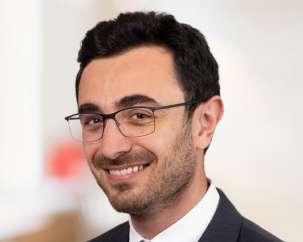

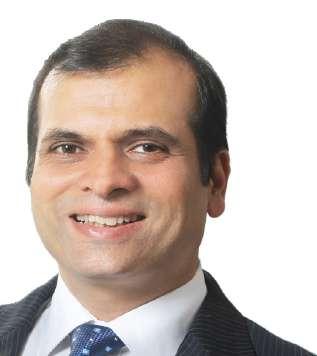

CONTENTS DECEMBER 2022 03 EDITORIAL 06-09 OPINION 10-21 EVENTS 23-30 NEWS 32-35 TRANSFORMATION CHAMPIONS 41-64 INDUSTRY TRANSFORMATION 68-69 SOCIALLY SPEAKING 66-67 INDUSTRY COMMENTS 66 asia.biznesstransform.com 5 DECEMBER 2022 BUSINESS TRANSFORMATION ASIA JAI MRUG Founder and CEO, M76 Analytics. Building an expert system for business M76 ANALYTICS COVER STORY 36-40
CREATING SMART AND SAFE NETWORKS BY USING AI
A friendly device may not always be friendly, and enterprises should always be on the look-out for recognised devices trying to access different parts of network.
Many organisations are struggling to secure this rapidly expanding attack surface. This is not the first time IT teams have faced a device-based security challenge. Rise of BYOD and remote working both introduced an influx of mobile devices into the
business environment for IT to deal with.
#1 Visibility
Put simply, you cannot secure what you cannot see. Before you can take any other steps, it is crucial that you are able to accurately map what devices are connected
to your network, who is operating them, and how and why they are connecting to your network.
Traditionally identification has been fairly straight forward – IT teams worked against a narrow set of devices using well practised techniques and then employed profiling to say what each person or device should or should not be
DECEMBER 2022 BUSINESS TRANSFORMATION ASIA asia.biznesstransform.com 6
OPINION
BY JACOB CHACKO Regional Director Aruba HPE.

allowed to do on the network. But with many of today’s devices built with generic hardware and software, or coming from emerging vendors who do not follow standards; discovery, profiling and identification is proving more and more challenging.
The answer is to increase focus on context and machine learning. In many scenarios a combination of what protocols a device is using and what data, applications or web links it is accessing is the way to build up an accurate picture of what the device actually is, and whether the device is malicious.
#2 Enforce automatically AI is also important in the next stage of securing IoT – enforcing policy. Today’s IT teams need closed-loop, end-to-end access control from the moment a device joins the network. Given the sheer quantities of IoT devices, however, manual intervention is no longer practical. IoT devices are likely to be operating around the clock, or with some devices connecting at non-specific times to carry out a task before returning to sleep mode.
Deploying AI allows teams to develop policies that leverage context, such as the user role, device type, certificate status, and location or day of week, to make quick and accurate decisions each and every time. When an IoT device joins a network or starts to act suspiciously, it can be automatically segmented, keeping traffic separate and secure, with the policy consistently enforced across wired and wireless networks.
Machine learning-based analytics can also build baselines for normal of IoT devices – like authentication, remote access, and internal access to high-value resources
With many
of
today’s devices built with generic hardware and software, profiling and identification is proving challenging
and cloud app usage – across network and log data.
#3 Monitor for behaviour
Once you have followed the above steps to allow a device onto your network however you cannot just leave it unchecked. You can only enforce and create a relevant and applicable access policy if you are continually monitoring activities. Active monitoring is essential to keeping your network secure, looking for authenticity, new behaviours and new vulnerabilities –profiling and analytics are key here.
A friendly device may not always be friendly, and you should always be on the lookout for recognised devices acting in unusual ways or trying to access different parts of the network. Security is a constantly evolving and changing landscape, and unfortunately the job will never be done.
Security is not a barrier to IoT adoption, it is the cornerstone for successful adoption.
asia.biznesstransform.com 7 DECEMBER 2022 BUSINESS TRANSFORMATION ASIA
OPINION
DISTRIBUTING THE TASK OF BUILDING APPLICATIONS
In the experience-driven era, applications that connect users to core systems must roll out rapidly, but complex ones lie outside the expertise of citizen developers.
 BY SURESH SAMBANDAM CEO, Kissflow.
BY SURESH SAMBANDAM CEO, Kissflow.

Emerging from the chaos of the pandemic has come a new imperative – that of the employee experience, which called for intuitive, empowering connection to business intelligence and automated workflows for customer-facing activities, as well as multifaceted platforms for collaboration with colleagues.
Each time a program manager encounters a new use case on their digital transformation journey, they consult the map and the plan. The map will have already described the use case. The plan will opt for one of
four approaches to building a solution that will satisfy the use case.
Approach #1
The IT team could build it from scratch, retaining full control of the project, the product, and its maintenance. This takes a long time and puts a heavy requirements-gathering burden on the IT department.
Approach #2
Secondly, the IT team could use a low-code platform to develop the project, liaising tightly with business domain experts to ensure tight control
IT teams can accelerate individual application projects by using low-code development for complex solutions
DECEMBER 2022 BUSINESS TRANSFORMATION ASIA asia.biznesstransform.com 8
OPINION
over the project and optimise its integration into the stack while leap-frogging formal requirements gathering.
Approach #3
A third option is to allow business leads to become citizen developers and build the solution on their own with no IT supervision. However, this option would still require robust governance that would guide citizen developers and ensure they do not create system or information silos. Of course, there is always the fourth and final option, which is the full procurement route.
Approach #4
Purchasing a solution from a vendor that has tried-andtested experience of the subject area is appealing to many. But requirements gathering, while shorter in duration than when building a bespoke solution, still creates a delay in rollout. Additionally, this option
relinquishes considerable control of the solution, handing it to the vendor. So, for reasons of agility, flexibility, and control, outside procurement is not ideal.
Regional IT stakeholders should face the new landscape with a new plan that utilises a mixture of the first three options for solutions building. Let IT teams focus on core systems. Internal developers, properly equipped with the latest tools and appropriately versed in the innermost workings of the business, are best placed to create and maintain such systems, and this should be their top priority.
But IT teams can also accelerate each individual application project – and hence, the whole digital transformation journey – by using low-code development for complex solutions. In the experiencedriven era, the applications that connect users to core systems must roll out rapidly, but the more complex ones will lie

KEY TAKEAWAYS
By using low-code development, coders can not only meet the time demands of business, but they will spend less time away from core systems.
Citizen developers come into the picture where simple automated workflows and lightweight apps will suffice.
Business users understand the problems they are trying to address, they understand them better than any technology stakeholder ever can.
outside the expertise of citizen developers. By using low-code development, coders can not only meet the time demands of business stakeholders, but they will spend less time away from core systems.
And citizen developers come into the picture where simple automated workflows and lightweight apps will suffice. Business users understand the problems they are trying to address. They understand them better than any technology stakeholder ever can. No-code platforms can fulfil these project requirements under appropriate IT governance, assuming the platform supports all-in-one rapid prototyping, development, and deployment. n
asia.biznesstransform.com 9 DECEMBER 2022 BUSINESS TRANSFORMATION ASIA OPINION

EVENTS DECEMBER 2022 BUSINESS TRANSFORMATION ASIA asia.biznesstransform.com 10
GRAND FINALE
This

EVENTS asia.biznesstransform.com 11 DECEMBER 2022 BUSINESS TRANSFORMATION ASIA
year’s finale concluded by bringing together 230+ enterprise end users and IT executives from 40+ countries to share trends, best practices, health and wellness, and achievements of IT champions.
ONE STOP SHOP FOR BUSINESS AGILITY
This is a one-stop platform to help organisations get information, expert services, and consultation for their technology needs and projects from CIOs.
While technology players and vendors have long been offering their products on the service or pay-for-use model, the primary drivers of enterprise technology or CIOs have always been restricted in their roles within an organisation. Similarly, organisations too have been limited in their ability to benefit from the globally available pool of technology experts.
To help enterprises meet their technology challenges, a group of technology experts launched CaaS or CIO-as-a-Service at the sixth World CIO 200 Summit at the Grand Fourwings Convention Hotel in Bangkok.
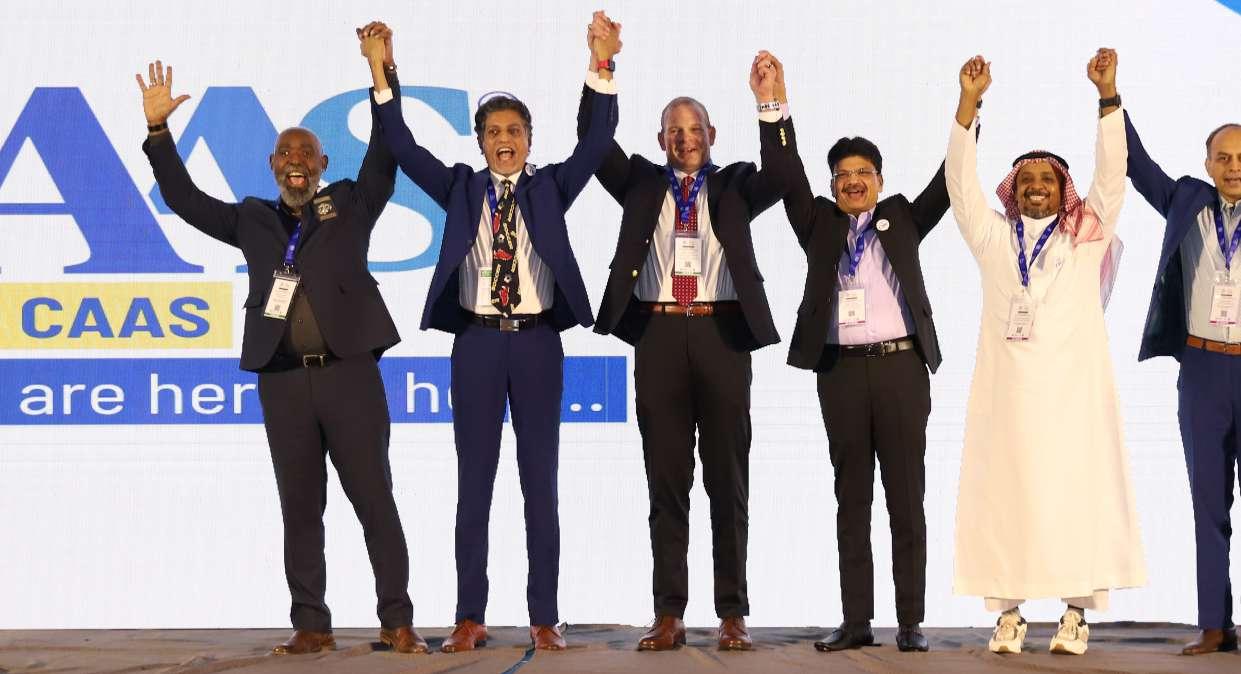
The global platform, designed to serve as a onestop-shop and a go-to-platform for meeting all enterprise ICT needs, was launched on the inaugural
day of the summit by Venkatesh Mahadevan, CIO of Dubai Investment. The others to join the launch included Basil Ayass, Sales Leader, Google; Pratap Pat Joshi, Global CIO Manufacturing Forum; Manoj Saxena, Chairman, RosettaNet Singapore GS1 Digital standards; Patrick Doliny, Retired US Marine Officer and Career CIO, CISO; Mohammed Mahnashi, Digital Transformation Advisor, Saudi Electronic University; Darren Shaffer, former Military Board Member and CTO.
The second day’s proceeding at the summit also saw the announcement of the partners who joined hands with CaaS, just a day after its launch, which was a testament to the strong relevance that it brings to today’s market. The discussion was led by Venkatesh Mahadevan, CIO at Dubai Investments,
DECEMBER 2022 BUSINESS TRANSFORMATION ASIA asia.biznesstransform.com 12
COVER STORY
THE WORLD CIO200 SUMMIT
To help enterprises meet their technology challenges, a group of technology experts launched CaaS or CIO-as-a-Service
Set up as a Decentralised Autonomous Organisation, CaaS is a community-led entity with no central authority
It will be driven by smart contracts to lay the foundational rules and execute agreedupon decisions
along with Henry Santos, Founder and Board Member of OPX America, and Uday Birajda, CEO and Co-Founder of Automation Edge.
How it began
In 2022, two technology evangelists met at an airport lounge and got talking, since their flight was delayed by a few hours. The discussion led them to come out with the concept of a one-stop shop or a platform that could help organisations get information, expert service, and consultation for their technology needs and projects.
Set up as an ultra-modern and state-ofthe-art DAO or Decentralised Autonomous Organisation, CaaS is a community-led entity with no central authority. It will be driven by an independent group of experts as an autonomous and transparent platform, complete with smart contracts to lay the foundational rules and execute agreed-upon decisions. The platform also plans to get the codes publicly audited by the community.
The platform aims to build a community of people who trust each other and offer solutions to clients by leveraging the power of collaboration, competency, and trust. The platform will also help businesses leverage the best and most appropriate technology solutions by
building stronger relationships between technology champions and enterprises, product vendors and integrators with clients, and the community itself.
Established in 2017, the World CIO200 Summit is a multi-country CIO felicitation ceremony that recognises the achievements of digital leaders of today who have transformed the IT infrastructure of their organisations driving growth and change. The summit in Bangkok is the culmination of the yearlong face-to-face and virtual celebrations across Africa, Europe, Qatar, UAE, Kuwait, Bahrain, KSA, Oman, Egypt, India, Singapore, and Pakistan editions of the event.
The grand finale of the World CIO 200 Summit in Bangkok was sponsored by CAAS as the strategic partner and StorIT, Automation Edge, Dell Technologies, Mindware, Redington, Logitech, and OPX Technology as platinum partners. It was supported by Veritas, Alteryx, Infinite Blue, and 3i Infotech as gold partners.
The silver partners included Western Digital, Forcespot, Accops, Veeam, NetApp, Logicom, Pure Storage, TechnePlus, Kissflow, DLlink, Exotel, and Finesse. The summit was supported by Infoblox, HTP, BITS Secure, SecureNet; RNS Technology Services, and MetaO.
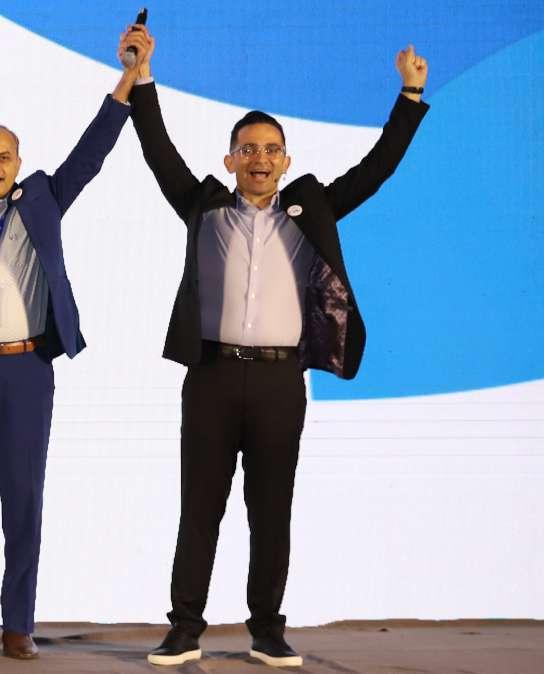
asia.biznesstransform.com 13 DECEMBER 2022 BUSINESS TRANSFORMATION ASIA
COVER STORY
The platform aims to build a community of people who trust each other and offer solutions to clients
EVENT SNAPSHOT DAY 1
Date of the event: 23 November 2022 Venue: The Grand Fourwings Convention Hotel, Bangkok
Number of attendees
230+
Workshop on Cybersecurity
Cybersecurity Go ‘Phishing’
l Patrick Doliny, Retired US Marine Officer and a career CIO, CISO

Workshop on CIO – CEO Journey






l Henry Santos, Serial Entrepreneur, COO, Board Member, Global CIO



l Darren Shaffer, a former Military Board Member and CTO

SPEAKERS
Ronak Samantaray Co-Founder and CEO, Global CIO Forum
Destiny is calling- CIOs are built to be the 21st Century CEOs
Charbel Zreiby Channel Presales Director META, Dell Technologies
Dr Corrie J Block Author and Speaker
Uday Birajda CEO and Co-Founder, Automation Edge
Binzaid Aliar Global Sales Head, Exotel
Dr Ektaa Sibal International Meditation Guru
Dinesh Varadharajan Chief Product Officer, Kissflow
Samer Semaan Channel and Alliances Manager – Middle East, Pure Storage
Rajesh Samantaray Co-founder, CEO, and Chairman, OPX Technologies
Date of the event: 24 November 2022

Venue: The Grand Fourwings Convention Hotel, Bangkok

Leadership Transformation Workshop
Martin Roll, Business and brand strategist, CEO mentor, advisor, bestselling author, and keynote speaker
Launch of CaaS global platform

l Uday Birajda, CEO and Co-Founder, Automation Edge





Venkatesh Mahadevan, CIO of Dubai Investtments l Henry Santos, Founder and Board Member, OPX America
Cross-Border
Moderator

l Syed Abdul Qader- Executive Director-IT Consulting and Cyber Risk Assurance, PwC Pakistan
Panellists
l Flavio Carvalho, CISO, Crédit Agricole Consumer Finance

l Indranil Chatterjee, Director – Cyber Security, Technology Consulting with Ernst & Young



l Jeevan Badigari, Director – Information Security and Governance, Damac Properties
l Hassan Nasser Muhi, Operational Risk and Information Security Management CISO and BCP Officer, Kuwait Finance House

SPEAKERS
Sri Anish Founder and Chief Mentor of Sadho Sangha Foundation
Francisco Mahfuz keynote speaker and storytelling coach
Manoj George Grammy awardwinning violinist and music composer
Sax Krishna Chief Growth Officer, 3i Infotech
Anushree Dixit Global Head of Content and Strategic Alliances, Global CIO Forum
Mohammad Sharif Regional Sales Head of Enterprise Business, Saudi Arabia, Logitech B2B, Logitech Middle East
Venkatesh Mahadevan founding member CaaS; CIO at Dubai Investments; Founder Zenpod; Industry thought leader
Harish Menon CEO, Accops
Dinesh Kunwar Patel Developer of the world’s first most languages speaking womanoid robot Shalu
Syed Abdul Qader Executive Director-IT Consulting and Cyber Risk Assurance, PwC Pakistan
Navtej Matharu Wanderer in the mountains, The Great Indian Himalayas
l
Panel on Business Continuity and Risk Management in Post pandemic era
230+ 250+ Number of attendees Global
EVENT SNAPSHOT DAY 2
recognition awards
HIGHLIGHTS OF THE WORLD


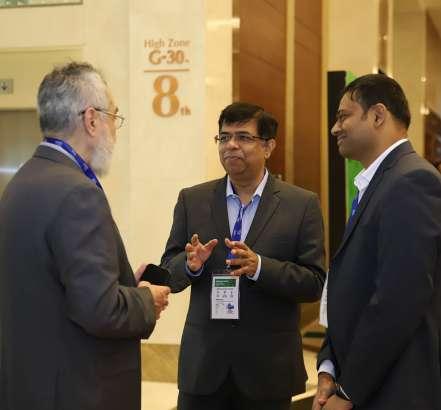





CIO 200 SUMMIT - DAY 1
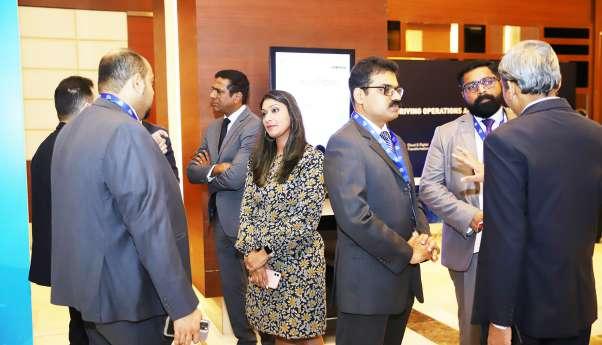






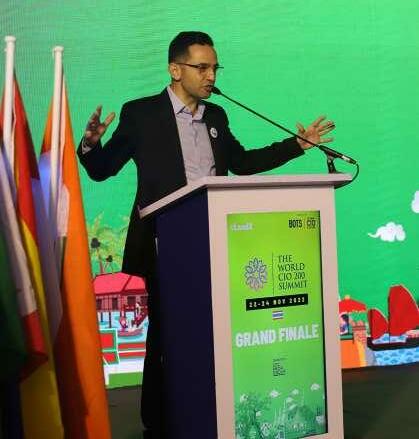
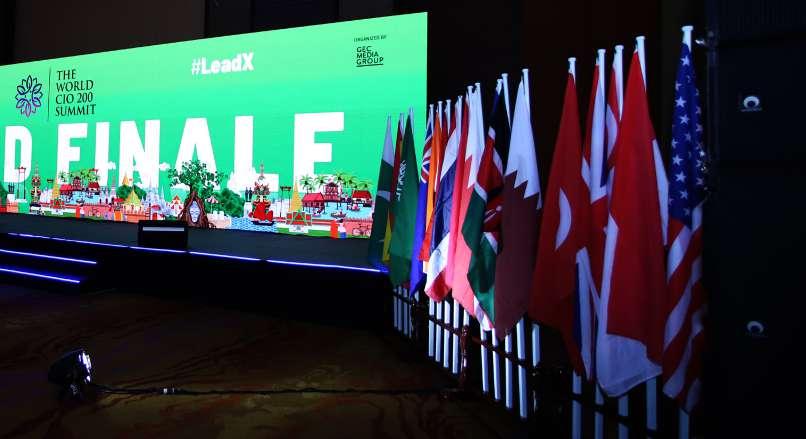
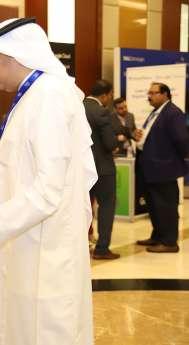
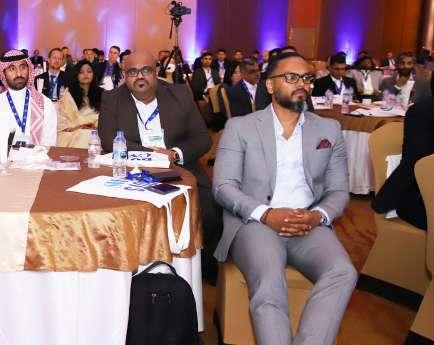
HIGHLIGHTS OF THE WORLD


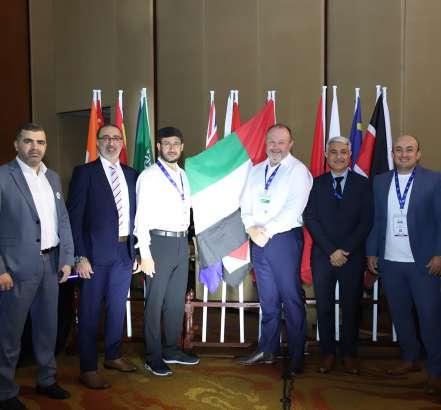




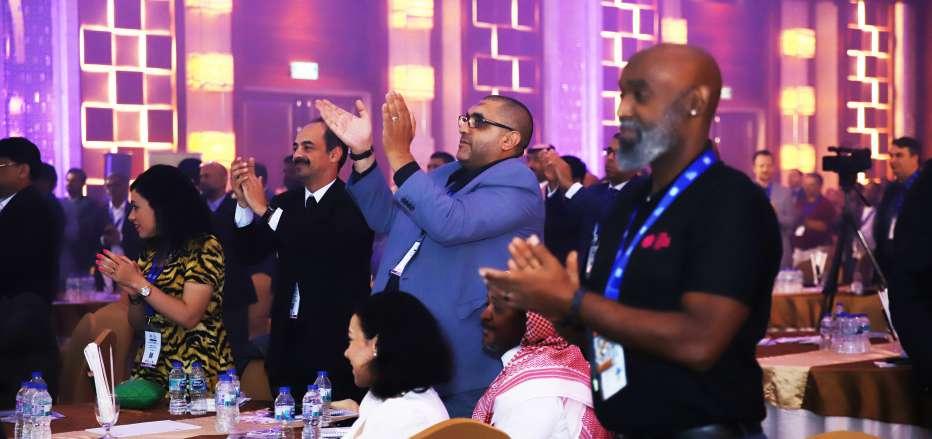
CIO 200 SUMMIT - DAY 2



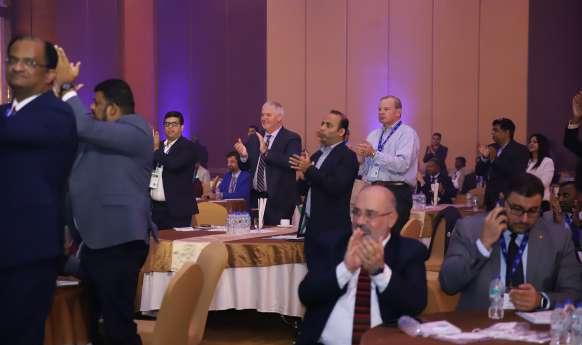


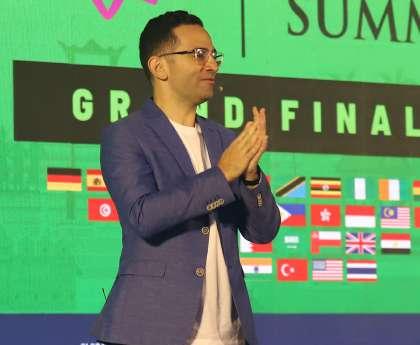








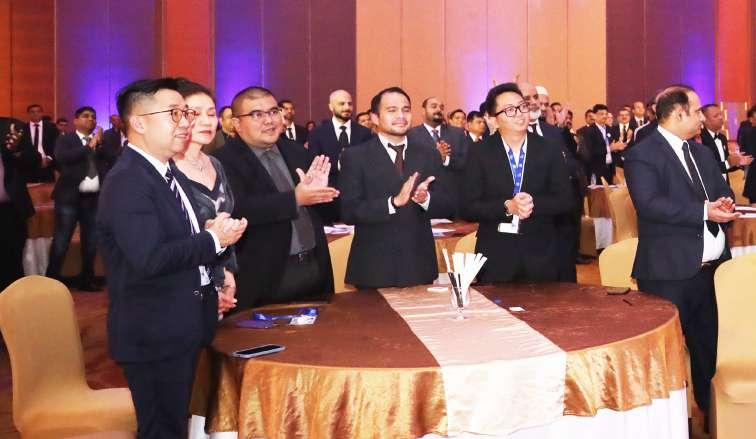

GALA
DINNER

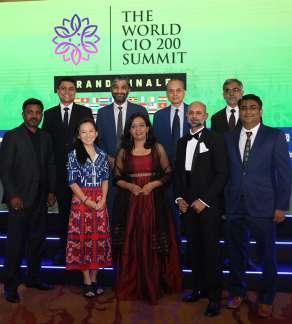


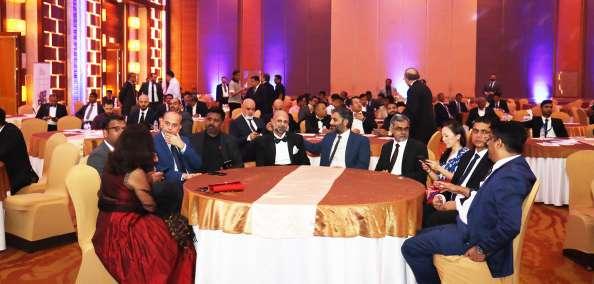





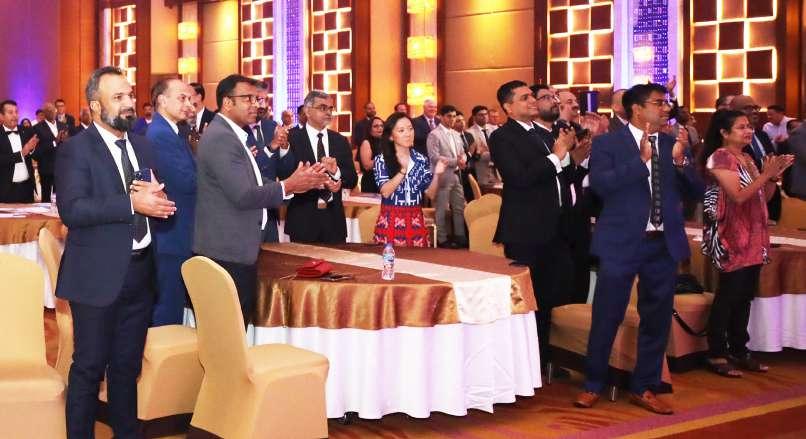








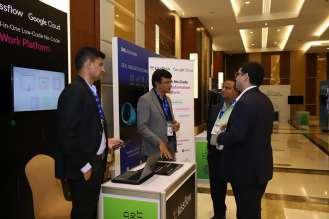
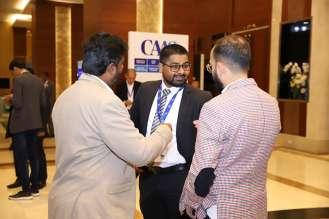
GRAND FINALE 22-24 NOV 2022 THE GRAND FOURWINGS CONVENTION HOTEL BANGKOK, THAILAND FOLLOW US BROUGHT TO YOU BY FLICKR CIO 200 GRAND FINALE NOW ON GLIMPSE OF DAY 2 SCAN FOR LINK
Smartworld Developers sign MoU with Schneider Electric for including home automation
Schneider Electric, and Smartworld Developers, a new age real estate developer headquartered in Gurugram, announced signing of a Memorandum of Understanding for driving 360-degree home automation in the latter’s upcoming projects. Through this collaboration, Smartworld Developers will build positive impact homes with lower waste and healthier interiors by incorporating smart product lines from Schneider Electric, which includes Wiser Smart Homes, Modular Switches, etc.
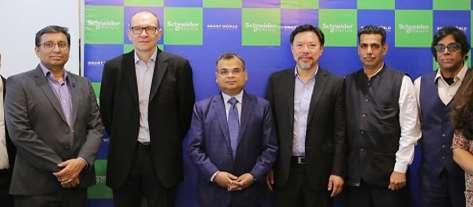
In line with its core value of delivering smart homes, Smartworld Developer will leverage a wide range of products and solutions by Schneider Electric to provide state-of-the art technology to their customers. Schneider Electric would complement the supply and service of products and solutions with a quarterly training and upskilling programme for the staff of Smartworld Developers.
Incorporated in 2021, Smartworld Developers is a
(Lefttoright)AshishJerath,DenisMarant,VivekSinghal,YifuQi, SrinivasShanbhogue,HariEaswaranIyer
professionally driven real estate company that is acclaimed for implementing corporate governance at all levels. The company disrupted the real estate market of Delhi NCR with its inaugural projects that offered low rise floors with high rise amenities – Smartworld Orchard and Smartworld GEMS are located at premium locations in Gurugram. With 4,000 happy customers, Smartworld Developers have recorded sales in excess of INR 4,000 crores, has Rs25,000 crores worth projects and over 2.5 Cr. sq. ft. development potential in next 5 years.
Smartworld Developers recently announced that it has secured INR 250 crore of investment from Motilal Oswal. The funds will be used as growth capital for Smartworld Developers.
Global construction technology vendor Trimble announced its commitment to reduce absolute scope 1 and 2 Greenhouse Gas emissions 50 percent by 2030, with 2019 as the base year. This is in line with the ambitious goals of the Paris Agreement and a net-zero future to keep global temperature increase to 1.5°C.

Trimble also said that it is committing to achieve 100 percent annual sourcing of renewable electricity by 2025. The company added that it has received approval of its emissions reduction targets by the Science Based
Targets initiative, a coalition of the CDP, the United Nations Global Compact, World Resources Institute and the World-Wide Fund for Nature, joining a growing number of companies taking urgent action on climate change.
Trimble’s recently released its 2021 Sustainability Report highlighting that the company’s technology solutions enable greater accuracy, less rework, and increased efficiency across industries, and therefore yield fuel savings that are estimated to prevent over seven million metric tons of greenhouse gas emissions annually. The company’s integrated solutions span key segments that play a critical role in day-to-day life, including buildings and infrastructure solutions for connected construction, geospatial, resources and utilities, and transportation.
Trimble’s Sustainability report 2021 describes how Trimble is helping to create a better future for our planet and the communities it serves, in line with the company’s mission of transforming the way the world works. The report summarises its initiatives and performance across Environmental, Social and Governance, ESG topics, highlighting the company’s sustainability approach, end-user industry solutions, community philanthropy through its Trimble Foundation Fund; employee engagement and development as well as Diversity, Equity and Inclusion, DEI initiatives; and governance.
Trimble to reduce scope 1, 2 emissions 50% by 2030, with 2019 as base year
NEWS
asia.biznesstransform.com 23 DECEMBER 2022 BUSINESS TRANSFORMATION ASIA
PAUL WALLETT Regional Director, Trimble Solutions Middle East and India.
Wipro opens Asia Pacific, Middle East, Africa HO in One Central at Dubai World Trade Centre

HH Sheikh Hamdan bin Mohammed bin Rashid Al Maktoum, Crown Prince of Dubai and Chairman of The Executive Council of Dubai, visited the newly opened headquarters of Asia Pacific, Middle East and Africa, Strategic Market Unit of Wipro, in Dubai.
HH Sheikh Hamdan bin Mohammed was accompanied by HH Sheikh Maktoum bin Mohammed bin Rashid Al Maktoum, Deputy Ruler of Dubai, and Deputy Prime Minister and Minister of Finance of the UAE.
Located in the heart of the bustling business establishment of One Central at the Dubai World Trade Centre, the newly-opened headquarters will lead Wipro’s expansion and investments across the UAE and APMEA. It will address the business, technology and transformation agendas of clients in focus sectors such as Financial Services, Retail, Telecom, Energy and Utilities, and the Public Sector. The APMEA strategic market unit generates around $1.5 Billion in revenue for Wipro. Over 30,000 Wipro personnel report to this regional headquarters.
UAE Business Forum signs 16 MoUs with Indonesian companies during side-lines of G20
The UAE Business Forum was held today in Bali, Indonesia, on the side-lines of the annual G20 meeting. The forum, which brought together business leaders from both countries, was launched to explore emerging opportunities for cooperation between the business communities, and resulted in the signing of 16 MOUs. The Forum was one of the first major investment conferences to take place since the signing of the UAE-Indonesia Comprehensive Partnership Agreement in July, and which is likely to be ratified in the coming weeks.
Among the 16 MoUs: l Deal between G42 and its subsidiaries Presight.ai and G42 Healthcare with Indonesian healthcare AI firm Asaren
l Burjeel Holding Group signed an MoU to develop a healthcare facility through a strategic partnership with the Indonesian Mitra Jaya Group
l Etihad Airways, GAL AMMROC and Sanad signed MoUs in aircraft maintenance
l MoUs on electric mobility and defence agreements signed by BarQ EV and Lahab respectively
l Seven MoUs were signed around cooperation on the organisation of the 2023 Annual Investment Meeting in Indonesia in 2023
HE Dr. Thani bin Ahmed Al Zeyoudi, Minister of State for Foreign Trade, H.E. Ahmed Ali Al Sayegh, Minister of State, and HE Luhut Binsar Pandjaitan,
Indonesian Coordinating Minister for Maritime Affairs and Investment, as well as a group of senior officials, business leaders, heads of companies and representatives of business community organisations from the UAE and Indonesia participated in the forum.
The UAE Business Forum in Indonesia aims to be a platform for networking and exchange of experiences between the business communities in the UAE and Indonesia. It also seeks to explore trade and investment opportunities in light of the upcoming implementation of the Comprehensive Economic Partnership Agreement. At the end of the forum, a number of cooperation agreements were signed between companies from both sides.
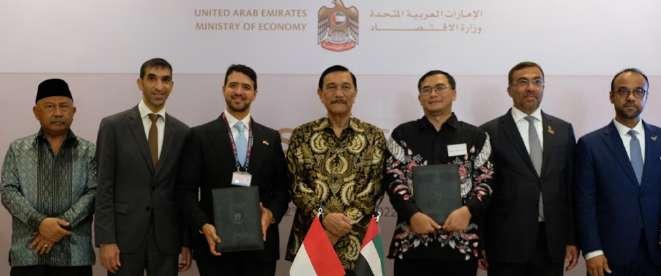
NEWS
DECEMBER 2022 BUSINESS TRANSFORMATION ASIA asia.biznesstransform.com 24
Global student housing platform Amber, secures booking of $600M, 40% margin in 2022

Amber, the leading global student housing platform, executed 1,000% growth in team size and operations, securing the leading spot in the market with a gross booking value of $600M by 2022.
More than 232 million students worldwide are looking for accommodation near their schools and universities. However, far fewer students find housing well within budget and matching their requirements.
“If finding a place to stay can be so difficult and expensive in a city like Mumbai, imagine the struggle students must face finding one across borders,” said Saurabh Goel, IIT KGP alumni, Founder and CEO of Amber. “Our friends’ struggling with student accommodation were the real eye-openers to a growing problem in the student housing market.”
Thus, two IIT KGP graduates, former batchmates and now Co-founders, Saurabh Goel and Madhur Gujar launched
amber in 2016. Born out of Google forms and Facebook groups, amber quickly grew as one of the world’s largest leading student accommodation platforms.
In only six years, the company revamped the student rental space, grew into a 400-member team, made $600 million in gross booking value with 40% net margin, and carved a large presence in the global real estate market. Showing no signs of slowing down, the team tripled gross booking values even during the pandemic.
“There is no one man or one brain behind this success,” beamed Madhur Gujar, Co-founder and Chief Business Officer. “The strategy is very simple – you have to have a great team with a vision for growth. So, we decided to onboard the best minds in the country, built a solid team, and pushed through any hurdles the market threw at us. The last couple of years were especially tough for the industry, but we made it through simply because of the resilience and focus our team brought to the table.”
Ahmedabad’s Umasree partners with Brazil’s Packem to manufacture sustainable bags
Umasree Texplast has entered into a JV with Brazil based Packem to produce 100% sustainable Flexible Intermediate Bulk Container, FIBC, Jumbo Bags made of PET, PCR, with an investment of $15 million, for a new plant in Gujarat to support circular economy and Make in India.
Umasree holds a 49% equity in Packem Umasree, the JV, and Packem, which recently became the first Brazilian company to produce 100% sustainable FIBC, Jumbo Bags will hold 51%. Packem Umasree will be the first company in India to start producing FIBC, Jumbo Bags made from 100% Recycled PET with the concept of Bottle to Bag.
The new production unit to come near Ahmedabad which will produce 100% sustainable FIBC, Jumbo Bags is expected to create about 700 jobs. The plant will help India become self-reliant as well as emerge as a hub for exports of the bags.

The global FIBC market is led by five countries India, China, Vietnam, Turkey, and Mexico. In 2021, these countries exported 250 million units, with India accounting for 50% of that volume. At least two per cent of the global FIBC, Jumbo Bag market will be able to immediately replace the polypropylene product with recycled PET, PCR bags and this replacement will increase over the years.
The rPET, PCR to FIBC, Jumbo bags is the greatest innovation of recent years in the segment of packaging for agriculture and will help in developing a circular economy. The first 100% bag-to-bag projects in the world will see big bags used in the field processed and recycled to be made into big bags again. The company will reuse 100% of the rPET FIBC, Jumbo Bags and help reduce virgin plastic from agribusiness and industry.
NEWS
(Lefttoright)MadhurGujarCo-founderandCBOandSaurabhGoelCo-founderandCEO.
asia.biznesstransform.com 25 DECEMBER 2022 BUSINESS TRANSFORMATION ASIA
Bengaluru based SASMOS receives wiring contract for P-8A Poseidon used by Indian navy
SASMOS JV has won the contract from Boeing to provide more than 6,600 wiring harnesses for the next batch of 16 P-8A Poseidon aircraft. Fokker Elmo SASMOS Interconnection Systems, a joint venture between Fokker Elmo and SASMOS, has been manufacturing Electrical Wiring Interconnection Systems for the aerospace industry since 2016, including wire harnesses for P-8A and P-8I.

A wiring harness is an assembly of electrical wires and connection elements which transmit signals or electrical power throughout an aircraft. It includes an engine,
Amazon signs MoU with TVS to deploy EV two-wheelers, three-wheelers for last-mile deliveries
Amazon India and TVS Motor Company announced a strategic engagement to strengthen electric mobility, electric infrastructure and connected services. As part of this collaboration, a fleet of electric two-wheelers and three-wheelers from TVS Motor will be deployed for Amazon’s last-mile deliveries. In addition, the two companies will work in tandem to examine EV use cases for various Amazon business groups for its network and logistical requirements. In order to test solutions, the two companies will pilot TVS Motor’s electric vehicle solutions through partner base and delivery associates across India.
In 2020, Amazon India announced that it would include 10,000 EVs in its delivery fleet by 2025. This is part of its overall progress towards The Climate Pledge – a commitment to achieve net-zero carbon by 2040, 10 years ahead of the Paris Agreement. The induction of these EVs is in addition to Amazon’s global commitment of 100,000 EVs by 2030. The partnership with TVS Motor Company is an important step in Amazon India’s progress in the e-mobility
fuselage, landing gear, wing, and a host of other functions. In short, it behaves like a nervous system for the aircraft and plays a vital role in communications, and power transmission thus ensuring the proper functioning of missioncritical systems.
The Boeing P-8 is an American maritime patrol and reconnaissance aircraft developed and produced by Boeing Defence, Space and Security. A formidable part of the Indian Navy’s fleet, the P-8 is a proven system with 153 aircraft in service that has executed more than 450,000 mishapfree flight hours around the globe.
Along with the Indian Navy, the P-8 family includes the U.S. Navy, the United Kingdom’s Royal Air Force, Royal Australian Air Force and Royal Norwegian Air Force. Militaries that have selected the P-8 include the Royal New Zealand Air Force, the Republic of Korea Navy, and the German Navy. The P-8’s performance and reliability deliver confidence in an uncertain world – in any condition, anywhere, anytime.
Known for its consistent performance in quality and delivery, SASMOS has built more than 40,000 harnesses for more than a hundred aircraft.
industry and towards achieving its net-zero carbon goals.

This partnership is also in line with TVS Motor’s announcements aiming to have electric vehicles across segments like delivery, commuter and premium. TVS Motor Company will introduce a full portfolio of electric two-wheelers and three-wheelers over a period of eight quarters in the domestic and international markets. It will further be instrumental in expanding and strengthening the company’s focus on presence across all major cities, charging solutions and alternate ownership models in India.
Local logistics players, delivery associates, fleet operators, and EV stakeholders will be able to benefit from this extensive collaboration as it offers a potential increase in the share of EVs in Amazon’s last-mile delivery, and provides them with an opportunity to participate in TVS Motor’s product and service offerings in the commercial mobility segment.
NEWS
DECEMBER 2022 BUSINESS TRANSFORMATION ASIA asia.biznesstransform.com 26
Real estate communities driving Gurugram and Delhi super corridor of connections
Gurugram has always been regarded as the best city to buy residential property. Due to the wide range of appealing options available to both investors and end users because of its best location for any type of real estate investments. It is one of the cities with the greatest population growth, it maintains a strong urban infrastructure that enables its residents to live and prosper in the city. Gurugram has experienced decades of expansion and has a proven economic model, making it a hotbed for real estate investments. It has experienced enormous growth as a city and has also kept up with the times, creating a vibe and feel that is desired by all.
Ritesh Arora, Director of Urban Plus Infrabuild, stated we’re seeing a steady rise in consumer enthusiasm towards real estate
investments, especially with the festive season having just ended we are still seeing a considerable improvement day by day majorly for residential properties. This trend is expected to continue going forwards, especially for the demand for luxury residential properties. One of India’s major cities, Gurugram has the richest households. It draws a sizable, established and expanding niche of purchasers who are eager to invest in high-quality homes as both a safe investment and a reflection of their lifestyle. Modern consumers and sophisticated home buyers view a home or apartment as more than just a place to live; they see it as a success symbol and a way to live luxuriously.
Moreover, Gurugram offers something to suit every taste. All projects, regardless of price, have something to offer. Whether you
ARORA
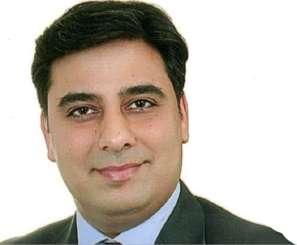
are searching for luxury or ultraluxury residential properties. Many people are migrating here every day! The improvement in infrastructures like the broadening of NH-8, expansion of Sohna Road, Golf Course Road, and operational rapid metro have proven to be glowing. Due to its quick accessibility, the Dwarka Expressway is the best place in the NCR to live comfortably. With metro access, this location is more likely to draw inhabitants and real estate developers, which will increase prices.
for high energy materials
EDGE Group’s LAHAB, which specialises in producing a wide range of ammunition and provides cutting edge technologies in ammunition development, services, and training, signed a Memorandum of Understanding with Indonesia’s state-owned PT Dahana, which is engaged in high energy materials and provides integrated explosives services for the General Mining, Quarry and Construction, Oil and Gas, and Defence sectors.

The MoU, which was signed by LAHAB CEO Arafat Al Yafei, and the Director of Technology and Development of Dahana, Suhendra Yusuf RPN, will pave the way for cooperation in the field of manufacturing, and the production of several types of explosives, capitalising on the existing capabilities of both companies, and allowing them to explore joint investment in the construction of a TNT plant at the Dahana Energetic Material Centre area in Subang.
The agreement is the result of the support and guidance of the leadership of both countries, EDGE, and DEFEND ID, the holding company under
which Dahana sits. EDGE and DEFEND ID signed a Confidentiality Agreement in August 2021, and a Master Agreement in January 2022, for cooperation and evaluation of potential strategic partnerships in joint ventures, joint investments, and other joint opportunities.
LAHAB and Dahana will establish a joint technical team which will be responsible for defining a complete roadmap and execution phase of the co-investment and the development of existing facilities in Indonesia. Both companies are also exploring cooperation for production of propellant and RDX, energetic materials that play a strategic role in the growth of sovereign defence capabilities. Currently, Indonesia’s domestic requirements for these materials are covered by imports, which are vulnerable to foreign embargoes.
NEWS
EDGE Group’s LAHAB signs MoU with Indonesia’s DAHANA
RITESH
Director of Urban Plus Infrabuild.
asia.biznesstransform.com 27 DECEMBER 2022 BUSINESS TRANSFORMATION ASIA
Redington announces highest ever quarterly revenue and operating profit ending 30 Sep
in improving technology capabilities, building deeper partner relationships, making the breadth of offerings more comprehensive and in innovative business models begin to pay off. Besides being highest ever Q2, this is the highest ever half yearly growth since the company going public in 2007. Execution has been broad based with all operating regions – India, Middle East & Africa, Turkey and South Asia contributing to growth.
Redington announced its financial results for Q2FY23, which ended on September 30, 2022. The company has registered its highest ever quarterly revenue and operating profit. Global revenues grew by a healthy 25% YoY to Rs. 19,080 Crores and PAT of Rs. 387 Crores is a strong growth of 26%. Operating margin for the quarter has grown by 23% YoY. While the global PC industry declined 15% in shipments during the quarter, the company’s PC business grew by +23%. Its revenues from Cloud grew by 67% in this quarter.
Redington achieved record revenue and operating margin for the 2nd quarter of the year as continued investments
The company made a timely pivot towards a digital business model. Through the Redington Online, a fully-automated, geography-agnostic, self-service portal it provides a seamless digital pathway to discover, access and procure a wide range of technology products, solutions and services. Their Cloud portal enables effective partnering with hyper-scalers to deliver cloud products and services to partners and customers.
Redington strengthened its cloud capabilities by entering into a strategic partnership with Google Cloud India to drive adoption of Google Workspace and Google Cloud with SMBs, education and public sector, mid-market, and enterprise segments. In the previous Quarter, Redington had entered into a multi-year Strategic Collaboration Agreement with Amazon Internet Services, to drive adoption of Amazon Web Services, AWS Cloud across all geographies they operate in.

Huawei achieves Level 4 autonomous horizontal driving for 76 vehicles at China’s
Tianjin Port

Huawei and Tianjin Port have jointly collaborated on a driverless, zero-carbon vehicle-cloud synergy, horizontal transportation solution. Huawei built an intelligent horizontal transport system at the terminal of Section C in the Beijiang Port Area of Tianjin Port. The project has achieved Level 4 autonomous driving, enabling 76 Intelligent Guided Vehicles, IGV in a fleet to collaborate efficiently. Huawei used cloud-based centralised dispatching to increase port-wide efficiency.
Huawei’s intelligent horizontal transport system has five key advantages. First, it offers global path planning. Huawei has designed a global path planning algorithm based on vehicle kinematics, which ensures that individual vehicles stay on their path. The algorithm enables multiple IGVs to make turns smoothly, whether traveling in one or both directions. This is the key to safe and efficient multi-vehicle cooperation. The solution also features dynamic short path planning on the cloud, responding to many terminal
operations and adjusting tasks in real time.
The second advantage is its high-precision positioning. Huawei uses BeiDou, 5G, HD maps, and roadside sensing assistance to assure highprecision lane-level positioning. As a result, 90% of quay cranes successfully align on the first try, significantly improving operational efficiency.
Third, Huawei developed the MDC intelligent driving platform. The upgraded Huawei MDC offers automotive-grade assurance, including ultimate computing power and long service life. It also simplifies O&M by providing standardised hardware.
NEWS
DECEMBER 2022 BUSINESS TRANSFORMATION ASIA asia.biznesstransform.com 28
RAMESH NATARAJAN CEO, Redington (India) Ltd.
IBM begins deployment of IBM Quantum System on Cleveland Clinic’s main campus

Global health system Cleveland Clinic and IBM have begun deployment of an IBM Quantum System, which is to be located on Cleveland Clinic’s main campus in Cleveland. The first quantum computer in healthcare, anticipated to be completed in early 2023, is a key part of the two organisations’ 10-year partnership aimed at fundamentally advancing the pace of biomedical research through high-performance computing. Announced in 2021, the Cleveland ClinicIBM Discovery Accelerator is a joint centre that leverages Cleveland Clinic’s medical expertise with the technology expertise of IBM, including its leadership in quantum computing.
The Discovery Accelerator at Cleveland Clinic draws upon a variety of IBM’s latest advancements in high performance computing, including:
• Generative Toolkit for Scientific Discovery and other generative modelling capabilities that leverage AI to infer knowledge gaps and generate hypotheses, and ultimately aim to speed up the research process in therapeutics and biomarkers discovery;
l RXN, a cloud-based platform that combines AI models and the ability to directly control robotic labs to enable end-to-end design and synthesis of new chemical compounds;
l Deep Search, a next-generation AI tool for generating insight from large amounts of structured and unstructured technical literature; and
l High-Performance Hybrid Cloud Computing technologies that enable researchers to “burst” their workloads into the cloud and access the
resources they need at scale.
The Discovery Accelerator also serves as the technology foundation for Cleveland Clinic’s Global Centre for Pathogen Research & Human Health, part of the Cleveland Innovation District. The centre, supported by a $500 million investment from the State of Ohio, Jobs Ohio and Cleveland Clinic, brings together a team focused on studying, preparing and protecting against emerging pathogens and virus-related diseases. Through Discovery Accelerator, researchers are leveraging advanced computational technology to expedite critical research into treatments and vaccines.
Together, the teams have already begun several collaborative projects that benefit from the new computational power. The Discovery Accelerator projects include a research study developing a quantum computing method to screen and optimise drugs targeted to specific proteins; improving a prediction model for cardiovascular risk following non-cardiac surgery; and using artificial intelligence to search genome sequencing findings and large drug-target databases to find effective, existing drugs that could help patients with Alzheimer’s and other diseases.
A significant part of the collaboration is a focus on educating the workforce of the future and creating jobs to grow the economy. An innovative educational curriculum has been designed for participants from high school to professional level, offering training and certification programs in data science, machine learning and quantum computing to build the skilled workforce needed for cutting-edge computational research of the future.
NEWS
asia.biznesstransform.com 29 DECEMBER 2022 BUSINESS TRANSFORMATION ASIA
(Lefttoright)LaraJehi,M.DChiefResearch InformationOfficer,ClevelandClinicandRuoyiZhou, Director, Ph.D., IBM Research – Cleveland Clinic
Cryptocurrencies are notoriously volatile and poorly understood in mainstream markets. Yet there is little doubt that digital money and the blockchain will have a central role in future business. Estimates suggest more than 15 000 businesses globally already accept Bitcoin as payment.
High-profile brands that accept cryptocurrencies include the likes of Gucci and Chipotle. CFOs, who are charged with managing the financial affairs of a company, are increasingly considering what crypto will mean for their businesses. Global Sage research found that 52% of finance leaders believe decentralised currencies will prove ‘extremely’ viable as a long-term payment solution.
Let’s look at cryptocurrencies and what their adoption means for CFOs.
What are cryptocurrencies?
A cryptocurrency is a digital currency where transactions are verified by a decentralised system using cryptography rather than by a centralised authority such as a central bank or government organisation. Cryptocurrency is a digital token that is secured and transferred cryptographically and securely using blockchain technology.
Some examples of cryptocurrencies include Bitcoin, Ethereum, Litecoin and Ripple. Also looming in the future are central bank digital currencies, or CBDCs. These digital currencies have the backing of the central bank in a country
Cryptocurrencies are an emerging technology, and it is unclear how the market will play out. However, major cryptos like Bitcoin have shown their staying power despite their inherent pricing volatility. Businesses that utilise cryptocurrencies may be able to attract new customers and position themselves as cutting-edge businesses.
CFO challenges in using cryptocurrencies

While some businesses are experimenting with cryptocurrencies, others are more cautious due to various concerns. Our research found three significant hurdles when it comes to the adoption of cryptocurrencies: sustainability, skills, and security.
Regarding sustainability, cryptos have a reputation for consuming a great deal of power, which doesn’t
align with environmental, social, and governance, ESG concerns. Mining Bitcoin, for example, requires energy-intensive computing, is costly, and only sporadically rewarding with crypto tokens.
Companies across the board recognise an evergrowing digital skills From data science to cloud computing, organisations of all sizes struggle to recruit and retain the digital talent they need. In cryptocurrency and blockchain, those skills concerns are particularly acute.
Finally, 20% of CFOs in Sage’s research refer to security concerns regarding the major challenges of adopting cryptocurrencies. Industry experts suggest awareness and education will be crucialin helping finance departments adopt and then protect crypto assets. For CFOs, a lack of regulatory oversight in the crypto market is another concern.
What does embracing crypto mean for CFOs?
Embracing cryptocurrencies creates a new operational and financial challenge for CFOs. They need to carefully consider how these assets will sit on the balance sheet, given the wild swings in the value of cryptocurrencies. Any move towards crypto will be slow and cautious.
However, in the longer term, digital currencies may streamline transactions and help reduce transaction costs. They may also improve auditability and transparency across multiparty transactions. Smart contracts and digital currencies could one day enable higher levels of automation across the value chain.
While cryptos are still an emerging technology, they have come a long way in the past decade. We are seeing governments and regulators take them more seriously, which could foster higher adoption.
Nonetheless, not all CFOs will want to rush to accept crypto payments or use digital money as a store of value. Still, forward-looking finance leaders should familiarise themselves with the underlying technology and concept. Despite the challenges, digital assets certainly look like they are here to stay.
By
NEWS
Jordaan Burger, Vice President Finance, Asia-Pacific, Africa, Middle East.
DECEMBER 2022 BUSINESS TRANSFORMATION ASIA asia.biznesstransform.com 30
52% finance leaders believe decentralised currencies are viable says Jordaan Burger, Sage










GRAND FINALE 22-24 NOV 2022 THE GRAND FOURWINGS CONVENTION HOTEL BANGKOK, THAILAND FOLLOW US BROUGHT TO YOU BY FLICKR CIO 200 GRAND FINALE NOW ON GLIMPSE OF GALA DINNER SCAN FOR LINK
Logitech’s solutions will help them in re-tooling work and re-designing work spaces so that the job can get done from anywhere
NO ADDRESSES, NO SEATS, NO SHIFTS
Logitech is giving businesses the opportunity to redesign their workspace setups and hybrid work models with the needs of today’s hybrid work employee in mind.

Business models are changing, and so are perspectives around work - there are no fixed addresses, assigned seats or designate shifts - the job now gets done on around the clock with globalisation. Logitech B2B platform gives businesses the opportunity to redesign their workspace setups and hybrid work models with the needs of today’s hybrid work employee in mind. Logitech’s solutions will help them in re-tooling work and re-designing work

DECEMBER 2022 BUSINESS TRANSFORMATION ASIA asia.biznesstransform.com 32 TRANSFORMATION CHAMPIONS
LOUBNA IMENCHAL Head of Video Collaboration, Central Asia, Africa, Middle East, Logitech.
spaces so that the job can get done from anywhere.

Logitech provides solutions that comprise a complete ecosystem of video collaboration and personal collaboration hardware, software, services, and world-class partnerships. From boardrooms to living rooms, hot desks to huddle spaces and personal work desks. Logitech video collaboration and personal collaboration devices range from the newly launched Zone Vibe Wireless headphone and Brio 505 webcam for personal work desks, to Rally Plus; a premier modular video conferencing system for large rooms, for everyday video call needs.
Logitech’s line of products, solutions, and services are helping companies digitise their offerings in terms of delivering better customer and employee experiences. For example, healthcare organisations use Logitech video products to provide personalised healthcare in outpatient settings, inpatient hospitals, and nursing home facilities.
Logitech’s video collaboration tools provide the ability to convert any small room or workspace for telehealth to connect providers to patients, and patients to family members in long-term car. Especially, when healthcare organisations have remote working sites, Logitech video collaboration tools provide a cost-effective solution that can reduce the need for travel, improve internal collaboration, boost productivity and increase connectivity.
Logitech’s advanced technologies and design innovations make video conferencing easy and natural. The vendor developed RightSight to automatically move the lens and adjusts the zoom so that no one gets left out. For better audio and video, Logitech RightSight automatically optimizes voice for conversational clarity and Logitech RightLight optimizes light balance and fine tunes colour and saturation for better video.
The vendor’s room and personal workspace solutions designed with the user in mind, are plug and play, easy to use, easy to deploy and are rigorously tested and certified for compatibility with major video platforms such as Microsoft Teams, Zoom and Google Meet. To help business manage their video conferencing real estate and devices that are now spread across many locations, Logitech provides cloud-based device management software to support hybrid workforces
Logitech has more than 100 tier-1 partners, distributors, and solution integrators in the Middle East. Together with our market-leading solutions, these key partners enabled Logitech to achieve rapid growth in its video collaboration business. The Logitech Video Collaboration Summit 2022 in Dubai earlier this year, was a huge success. The Logitech channel ecosystem, is a key pillar of strategy and success in the region.
asia.biznesstransform.com 33 DECEMBER 2022 BUSINESS TRANSFORMATION ASIA TRANSFORMATION CHAMPIONS
Siloed departments, functions and applications burden large organisations
Transformation Solutions, Software AG.


MOVING FROM SYSTEMS OF RECORDS TO SYSTEM OF ENGAGEMENT
While reorienting company strategy for a new business model is relatively easy on blueprint, the actual implementation of decisions is very difficult.
DECEMBER 2022 BUSINESS TRANSFORMATION ASIA asia.biznesstransform.com 34 TRANSFORMATION CHAMPIONS
CEZMI EROGLU
Most organisations in the region have completed what is called ‘systems of records’ such as ERP, CRP and CRM systems. Moreover, in the recent years, there has been added focus on ‘systems of engagement’ which include mobile applications, customer engagement portals, etc. Organisations are now focusing on innovation and trying to identify new business models, new revenue streams, with the focus shifting towards delivering newer products and services to engage the customer defining differently.
The shift towards cloud application is increasingly accelerating versus earlier when there was extreme resistance due to security and legal challenges. This is changing now with government hosted solutions such as G42 picking up pace which brings focus on integration as most enterprises have a hybrid infrastructure and need to integrate across environments.
Siloed departments, functions and applications burden large organisations. The rapid transformation with newer technologies has led to greater complexity and fragmentation of data sources and applications. Customer engagement is spread across every process
and system at each stage of the customer lifecycle, leading to problems with integration, inconsistent data, and slower adoption of new tools at scale. A company hence needs to have cross departmental and cross organisational synergies to foster innovation.
The second issue that organisations face since the start of the pandemic is the flexible working environment that uses varied resources across different geographical locations. Organisations must ensure employees have the needed hardware and software that is necessary to foster productivity available in such an environment. It is vital to create a culture in which flexibility can thrive. A flexible work environment is the new norm and will remain important and vital for years to come.
The most important challenge faced are from external sources - the face of change and keeping up with changing factors such as market conditions, competition, global economic factors, which compel top executives to derive important and drastic decisions from time to time. While reorienting a company strategy and decision making for a new business model is relatively easy on the blueprint, the actual implementation of these altering decisions for overhauling the business model is very difficult as it requires an organisation wide adoption through people, processes, technology.
While it may sound like a buzz word, it is vital for companies to become ‘agile’ and be ready to keep up with these changes to act quicker. This will aid to stay on track staying focused despite external forces– in the short and long term.
The level of business transformation is a key indicator of an organisation’s maturity. Most organisations that are based on business data are mature, with shifting focus on hybrid integration – connecting applications, devices. The level of maturity in understanding the importance of integrating and harnessing the value from data is expected to be the biggest disruption in the coming years. Connecting everything together and using data to generate value.
Metaverse will be an additional channel for businesses to interact with customers in addition to traditional physical or digital channels to attract customers for sales conversion. For travel, one can get a real understanding of hotels, its facilities, rooms, services. This is also relevant in real estate where a metaverse version will provide a near to real experience of what a customer can expect post construction and development of the premises.
Metaverse possibilities could include teaching medicine, or maintenance of an airplane.

asia.biznesstransform.com 35 DECEMBER 2022 BUSINESS TRANSFORMATION ASIA TRANSFORMATION CHAMPIONS
While it is good that an analytic system may tell you what is selling and what is not, it is also important to decide what exactly to sell and when
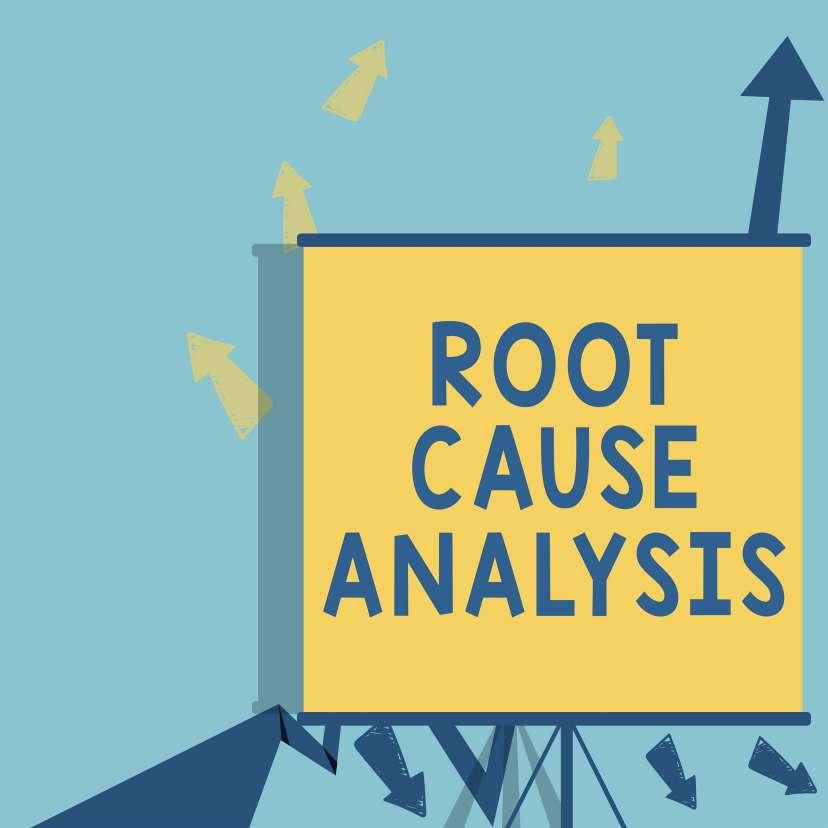
M76 ANALYTICS
Building an expert system for business
Jai Mrug has built Mego to help enterprises use analytics and simulation to spot snags in processes and boost business growth.

DECEMBER 2022 BUSINESS TRANSFORMATION ASIA asia.biznesstransform.com 36 COVER STORY
JAI MRUG Founder and CEO, M76 Analytics.
Between 2008 and 2012 Jai Mrug worked with a large Indian IT services firm in the United States as the pre-sales head of the company’s supply chain analytics services in the country. He would often see that there were veritable gaps in the products and solutions being offered by the companies and what the customers needed.
He also noted that while vendors were providing a plethora of visualisation tools, there was a lack of analytics solutions that could help organisations do a realistic root cause analysis and business simulation. Also, the existing off-the-shelf solutions generated top-down visualisations or mere transformed excel sheets that needed simulations and a variety of slices and dice to generate information that would be useful for business.
“Often large data science teams were needed to develop these post-processing solutions. For example, how could a particular raw material feature impact the end profitability, or how a combination of finished goods could change the load optimisation, are something you do not expect a visualisation system to answer for you,” Mrug points out.
“This is why organisations need artificial intelligence or an expert system to assist in their decision-making. Genuine business decision support means the ability to simulate scenarios not tied to past data or data models but explore those dark corners whose relationships perhaps even the company may not know or its static data models may not analyse.”
Mrug knows data analytics and modelling, for he has also been a consultant, psephologist and analyst for more than a decade with Times Now news channel as a data cruncher for electoral forecasting. As a founder and CEO of M76 Analytics, he has also filed two patents in the US, in the area of data analysis and optimisation.
Set up in 2013 by Mrug, the IIT Bombay incubated M76 Analytics offers solutions that can help enterprises create business strategies by analysing opportunities and risks and related costs using end-to-end data modelling.
Solving the dynamic data puzzle
As the intersection of data and AI presents a spectrum of opportunities for the ever-
challenged enterprise leadership, Mrug and his team promise to transform data just right so that it can lend itself to a decision support system, and can be effortlessly moulded by the AI algorithms. This helps organisations spot snags in their current process and provide options to tap business growth opportunities within an integrated framework that can trigger alerts and discussions while redesigning the strategy continually.
Explains Mrug: “A visualisation-led analytics system may provide insight about different payment cycles, the customers that pay in time and those who do not, and how many have abused their credit periods and others who may not have. While it is good that an analytic system may tell you what is selling and what is not, it is also important to decide what exactly to sell at which juncture of the customers’ life cycle?”
Based on his earlier experience and feedback from the companies, M76 noted that there was a need for a solution that can help businesses shape the customer’s demand to ensure optimal utilisation of capacity and maximisation of profit. It also realised that technology, especially AI can be effectively used to scale up the decision support systems and to dynamically simulate the profitability equation to request feedback about decision points that a business may need.
The company also saw that organisations need to re-work their production plan if they want to prioritise customers or dynamically change their plans. This required an estimation of the change in production volume and an impact assessment of procurement plans. M76 was also faced with the challenge of developing a dynamic profitability maximiser that can be used to maximise profit.
“The idea stemmed from the need to minimise surprises and identify the hidden elements of process behaviour, man-machine interactions, quality, and process parameters that ultimately drive an enterprise,” Mrug points out. He highlighted that the company wanted to address the issue of identifying SKUs that were consuming more resources so that organisations can take corrective actions to maximise their profits. One of the solutions that the M76 team thought of was to use IoT data to dynamically monitor profitability projections.
Dealing with the challenges
A key challenge for M76 was obtaining talent for building the core technical framework. With most of the Indian talent engaged in the services sector, developing reports and extensions, and hard-wired vertical solutions, a generic framework was difficult to conceptualise, implement and test. Customers,
asia.biznesstransform.com 37 DECEMBER 2022 BUSINESS TRANSFORMATION ASIA COVER STORY
on the other hand, had been enamoured by a variety of pure-play visualisation solutions, whose lack of value was very evident, but at the same time, their charm difficult to dissuade customers to go beyond.
One of the most draining phases of the sales cycle was establishing the actual use cases of the customers. Used to quickly deployable visualisation

products, they would often take six to nine months to establish their actual decision support use cases. Also, unlike a visualisation-led data analytics product, the company needed to test its solution framework against several actual outcomes and experiences of the company, which made the evaluation cycles longer.
“Often customers simply lacked in data governance to
provide data with integrity, taking ages to clean up the data sets as well as assess for data sufficiency,” Mrug points out.
The company eventually developed its framework to assess data sufficiency, its workshop format to draw out use cases, and finally an implementation methodology which moved in step with the core product feature. This now helps the rapid proof of concept deployment.

DECEMBER 2022 BUSINESS TRANSFORMATION ASIA asia.biznesstransform.com 38
COVER STORY
RevenueoptimisationwithpredictiveindicatorsforviolationofbusinessKPIs.
ThoughtPinsituationalroot-causeanalysisandfeedbackasdrivenbythesystem.
Mego is made to put business decisions in the hands of the noncoding experts

Mego for the real business analysis
Designed and developed entirely in India, Mego’s architecture offers a unique template that can be used to dynamically analyse the root cause of a certain phenomenon, and then submit the learnings of the machine to an AI module. The module deploys the knowledge first to optimise the business outcome and then to create a bed available for business simulations that are used as genuine business decision support. The module deploys the knowledge first to optimise the business outcome and then to create a bed available for business simulations that are used as genuine business decision support.
“Our architecture helps repurpose business-centric algorithms across enterprise scenarios and in rapidly developing solutions that span across verticals. These algorithms are built specifically for applying machine learning to enterprise business scenarios,” Mrug explains. He further highlights that the solution comes with a recommendation engine that can easily consume these ML inputs and convert them into enterprise-level business recommendations.
ADVANTAGE MEGO
Business Investigation: The solution allows organisations to quickly investigate and diagnose the business and prescribes mitigative actions based on the root causes of expected business shifts.
Business Optimisation: Mego uses smart combinations of optimiser-optimiser duos to cut down run time, with each run of optimisation.
Business Scenario
Simulations: The solution leverages the existing IT setup and converts Data to Decision help at scale with levers and sliders important to business decision-making on a simulation screen.
asia.biznesstransform.com 39 DECEMBER 2022 BUSINESS TRANSFORMATION ASIA
COVER STORY
TheThoughtChatboxfeaturesIntegrated Alerting,CaseManagement,Discussion Board.
KEY TAKEAWAYS
Off-the-shelf analytics solutions offer visualisations or transformed and pivoted data sets that need the application of human intelligence to generate information useful for business.
M76 Analytics solution enables enterprises to create business strategies by analysing opportunities, risks, and related costs by using end-to-end data modelling.
The unique approach analyses the root cause of a phenomenon and submits the learnings of the machine to an AI module.
The framework dynamically deploys the knowledge to optimise the business outcome and creates a bed for business simulations for business decision support.
The solution lets organisations quickly investigate and diagnose business and prescribes mitigative actions based on the root causes of expected business shifts. Besides, the solution does not disrupt the existing IT setup and instead leverages it to provide data to decision help at a scale. Mego also uses smart combinations of optimiser-optimiser duos to cut down run time, with each run of optimisation.
“While several top consulting companies have emphasised the need for simulative and responsive business planning based on AI, few have been able to architect a solution that addresses dynamic value creation and simulation across the value chain,” he says, adding that M76 Analytics has solutions that fill the void.
Talking about the business model, Mrug points out that Mego’s technological architecture helps it in conducting rapid PoC.
“These rapid PoCs help our customers to connect with the solution and the product features. It also enables users to interact with the system in
an almost codeless fashion. The customisability of our framework helps in developing solutions that specifically meet customer requirements,” he adds.
No wonder then, the company has been working with companies like Thomas Cook India, Prudent Insurance Brokers, Swatantra Finance, the NBFC arm of the Aditya Birla group, and others to help them tackle business decision-making challenges.
Post-pandemic the company has reworked its architecture to make it more asset-encasing, which makes the product deployment fairly independent of the level of training a technical resource has. The new architecture is configurationdriven and thus does not require much customisation. This opens up the opportunity to rapidly create new solutions, in an almost codeless fashion.
“Mego, our solution, is made to put business decisions in the hands of the non-coding experts and let the business domain drive the decision support framework,” sums up Mrug.
Shubhendu Parth is a contributor to Business Transformation Asia.
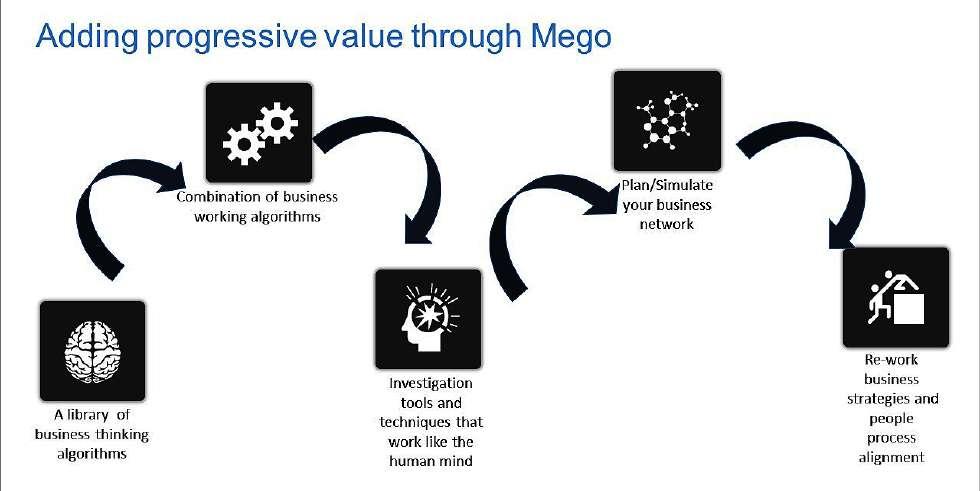
DECEMBER 2022 BUSINESS TRANSFORMATION ASIA asia.biznesstransform.com 40
COVER STORY
MegofollowsaprocessandKPI-centricapproachratherthanapure-playdatamodelapproach.

AVEVA ENERGY TRANSITION, SUSTAINABILITY, ENABLED BY DX Availability of AVEVA’s digital platforms is enabling the oil and gas industry in energy transition and sustainability initiatives. CASPAR HERZBERG COO, AVEVA. asia.biznesstransform.com 41 DECEMBER 2022 BUSINESS TRANSFORMATION ASIA INDUSTRY TRANSFORMATION
The performance of the oil and gas industry is dependent on the economic cycle and oil supply, and for now, oil demand is still expected to grow over the next few decades. With the energy transition underway and the current global happenings, however, it is likely that as the economy recovers, industries might not go back to relying primarily on oil.
Currently, oil and diesel are still major players in the market, but this demand is diminishing with a growing awareness of, and action towards, climate change. Renewable energy sources are gathering momentum with a global push towards sustainability and digital transformation. Embracing cleaner fuels over fossil-based systems of energy production and consumption is made increasingly easier for companies as the costs of renewables drop.
“There is a worldwide shift towards a decarbonised economy. Digitalisation will help refiners handle this energy transition, while reaping the benefits. In order to comply with all the new requirements, refiners need to be
capable of reducing carbon intensity immediately and prepare to implement methods that diverge from fossil-based fuels,” says Caspar Herzberg, COO, AVEVA.
As refiners seek solutions to lower carbon emissions and adapt to the changes brought by the ongoing energy transition, they will have to adjust operations, modernise existing process units and design new facilities. All of these will only be possible by being on top of the shift through digitalisation.
“Refiners need to face two big challenges today,” continues Herzberg. The first challenge is to act immediately on current operations minimising carbon emission and ensuring safe operations. Digital technology can be used to optimise operations reducing emissions to the minimum level possible, while preserving safety conditions of the plant.
Digitalisation can also predict equipment behaviour anomalies with machine learning and AI, and train operators via the cloud so they will be ready to identify the risk of an accident and act in time to prevent it.

The second challenge is to ensure they can reach the net-zero condition by 2050 and energy transition

DECEMBER 2022 BUSINESS TRANSFORMATION ASIA asia.biznesstransform.com 42 INDUSTRY TRANSFORMATION
Companies should look to shape ESG strategies based on feedback from stakeholders
will play a critical role here. Several studies are already in place to develop new processes with renewable feedstock.
The digitalisation of the engineering cycles is crucial to speed up new developments through higher engineering data reliability, and collaboration among different teams. If properly applied, the right digital tools and work approach will enable innovation and creativity to develop new process that will be at the same time green and profitable.
One of the fastest and simplest ways that refiners can adopt to increase profitability and sustain resources is through early detection of equipment failure and process behaviour changes. By reducing unscheduled downtime, productivity stays consistent, and with consistency, the workforce is more efficient, and profits are gained.
KEY TAKEAWAYS
Digitalisation of engineering cycles is crucial to speed up new developments through higher engineering data reliability.
The right digital tools will enable innovation to develop new processes that will be at the same time green and profitable.

Digital transformation is rapidly becoming the foundation for the next-normal in the oil and gas sector.
Cloud services are in need right now and AVEVA is working across customers to use this technology.
We are in what many refer to as a critical decade – a pivotal time in the fight against climate change.
It is also an opportunity to secure a sustainable and equitable future for all.
It is important for companies to chart out and expand their ESG agendas.
Goals should be trackable so a company can act if it sees it is not on the path to achieving its goals.
asia.biznesstransform.com 43 DECEMBER 2022 BUSINESS TRANSFORMATION ASIA INDUSTRY TRANSFORMATION
RECOMMENDED BEST PRACTICES
There is a worldwide shift towards a decarbonised economy. Digitalisation will help refiners handle this energy transition, while reaping the benefits. In order to comply with all the new requirements, refiners need to be capable of reducing carbon intensity immediately and prepare to implement methods that diverge from fossilbased fuels.
The digitalisation of the engineering cycles is crucial to speed up new developments through higher engineering data reliability, and collaboration among different teams. If properly applied, the right digital tools and work approach will enable innovation and creativity to develop new process that will be at the same time green and profitable.
As refiners seek solutions to lower carbon emissions and adapt to the changes brought by the ongoing energy transition, they will have to adjust operations, modernise existing process units and design new facilities. All of these will only be possible by being on top of the shift through digitalisation.
One of the fastest and simplest ways that refiners can adopt to increase profitability and sustain resources is through early detection of equipment failure and process behaviour changes. By reducing unscheduled downtime, productivity stays consistent, and with consistency, the workforce is more efficient, and profits are gained.
AVEVA has a history in using its engineering capabilities to help customers in oil and gas to modernise existing facilities to adapt current processes for more sustainable operations. This data centric approach combined with simulation capabilities allow customers to evaluate hundreds of scenarios and design new plants much faster than before.
By shortening the engineering cycles and exploring the libraries for sustainability, like the features for hydrogen production, oil and gas companies can make significant advancements in their journey towards a net-zero operations.
AVEVA software can save 15-30% in energy costs and reduce CO2 emissions by 9-15%, cutting downtime by 25%. Furthermore, with AVEVA software, businesses can save up to 15% in total installed cost and up to 30% in design cost, while allowing workers to make smarter feedstock decisions, from 2 days to 2 hours, for improved climate impact and less downtime.
“Digital transformation is rapidly becoming the foundation for the nextnormal in the oil and gas sector. Cloud services are in critical need right now, and AVEVA is working across customers to expedite their use of this technology,” says Herzberg.
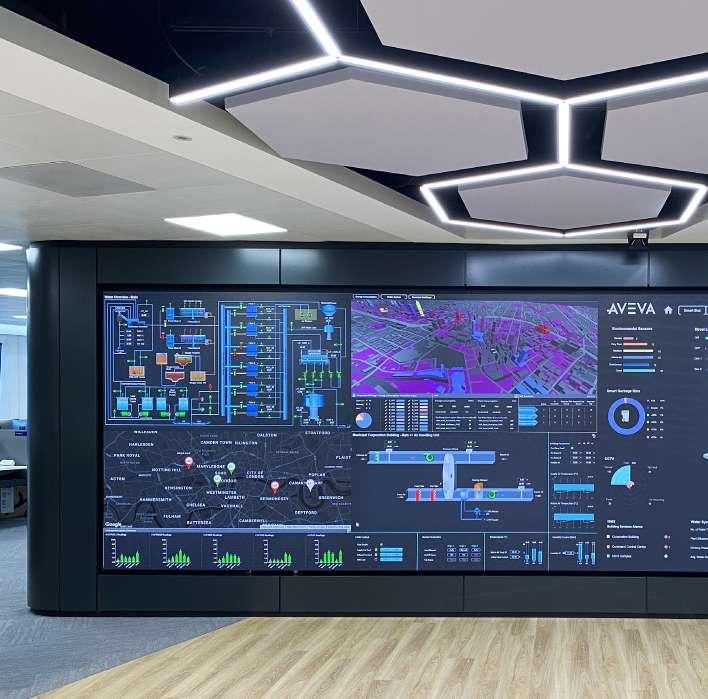
New technologies such as Artificial Intelligence present four key areas to alleviate business and operational risk, improve safety and efficiency within the workforce, and deliver a more reliable and secure enterprise.
“We call this the four Ps: Predictive, Performance, Prescriptive and Prognostic,” points out Herzberg. AVEVA’s products equips oil and gas companies with the technology to flourish under the wave of digital transformation.
An environmental,
social and governance, ESG strategy in actuality is a business model that outlines social responsibility within an organisation and beyond. A full-fledged ESG strategy comprises significant focus on environmental care, a responsibility to people outside the organisation and adhering to best business practices.
Energy companies are large enterprises with multiple stakeholders, so it is advisable that they create or expand their ESG strategies based on feedback from stakeholders, and by conducting thorough materiality assessments and setting trackable goals. They should also go back and reassess their ESG efforts over time so they can achieve new levels of success.
While there may be initial upfront costs, over time a well thought out ESG strategy and focus on sustainability will actually help a company thrive,
DECEMBER 2022 BUSINESS TRANSFORMATION ASIA asia.biznesstransform.com 44 INDUSTRY TRANSFORMATION
HOW AVEVA IS MANAGING ASSET PERFORMANCE FOR PETRONAS
Petroliam Nasional Berhad, PETRONAS, Malaysia’s fully integrated oil and gas multinational company, produces 2.4M barrels of oil equivalent per day.
With the commitment to achieve net-zero carbon emissions by 2050, PETRONAS recognised the importance of plant stability to achieve its sustainability goals. Its engineering division, which was keen to optimise equipment performance to improve plant reliability and reduce downtime, turned to AVEVA’s asset performance management solutions.

The engineering division at PETRONAS was keen to optimise the performance of their equipment to improve plant reliability and reduce downtime. They turned to AVEVA’s cloud-based asset performance management solutions, resulting in savings of $17.4M and 14x ROI in the first year.
Out of 51 warnings, 12 were identified as high-impact warnings. Acting on these and preventing them in advance of actual failure reduced unplanned downtime. One notable incident amongst many was an instrumentation fault which was identified on time, leading to a catch in a liquid separator that saved PETRONAS $222,000 in potential asset failure and wasted material. Moreover, many of the catches helped in reducing critical rotating equipment failure, boosting improved reliability through proactive asset monitoring and maintenance.
Following this success, PETRONAS is expanding the deployment of AVEVA Predictive Analytics, implementing an additional 10 plants with a total of 150 equipment trains. The AI-based models combined with an easy-to-implement tool allow O&G companies to roll out in scale, boosting the benefits across multiple sites

and achieve its business and financial objectives. Moreover, as governments seek to reach peak emissions in the next few years and introduce legislation to decarbonise their economies to stave off climate change in line with the Paris Agreements, sustainable operations will become a necessity.
In addition, while organisations exist to provide products and services and make money, today’s investors and stakeholders are increasingly keen on businesses that make the effort to make the world a better place. So, again, businesses will gradually be challenged to evolve and adopt ESG strategies that incorporate sustainable objectives and operations.
“We are in what many refer to as a critical decade – a pivotal time in the fight against climate change but it is also an
opportunity to secure a sustainable and equitable future for all,” feels Herzberg.
It is therefore important for companies to chart out and expand their ESG agendas, with a significant focus on sustainability by achieving net zero, as well gender equality, so they attract the best talent and realise better business performance. These goals, whatever they maybe, should be trackable so a company can act if it sees it is not on the path to achieving its goals.
Companies should look to shape their ESG strategies based on feedback from stakeholders, by conducting a materiality assessment and studying its results with a view to outline trackable goals. In addition, companies can also look to the United Nations Sustainable Development Goals, which actually serve as a unifying blueprint for governments and corporations to drive sustainable development.
asia.biznesstransform.com 45 DECEMBER 2022 BUSINESS TRANSFORMATION ASIA INDUSTRY TRANSFORMATION
Picture for illustrative purpose only.
ACHIEVING NET-ZERO GOALS THROUGH DIGITAL TECHNOLOGIES
Meeting the needs of growing population while reaching net-zero goals requires companies to achieve operational excellence, agility, flexibility, insight.
Digital technologies are critical to the oil and gas, energy industry, particularly as firms adapt to a VUCA volatility, uncertainty, complexity, and ambiguity environment which promises to be the norm, not the exception.
Already, refineries around the world have begun to turn to tools like digital twins, digital simulation, and AI-powered predictive maintenance to optimise assets and improve sustainability. Going forward, digital

technologies will play a key role in decarbonisation efforts, helping integrate low-carbon energy sources into operations and allowing companies to balance energy sources while identifying efficiencies across their operations.
The next three decades represent a critical time for the oil and gas, energy industry. By 2050, demand for energy will grow by 50%; electricity generation will need to grow by 75%, 90% of which is expected to come from renewable sources. At the same time, the global population is expected to grow by
DECEMBER 2022 BUSINESS TRANSFORMATION ASIA asia.biznesstransform.com 46 INDUSTRY TRANSFORMATION
AspenTech
approximately 2 billion, millions of whom will make up a rapidly growing middle class.
BY DR TARIQ ASLAM Vice President and Head, AspenTech.
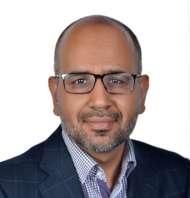
KEY TAKEAWAYS
Meeting the needs of that growing population while reaching net-zero carbon goals requires companies to achieve new levels of operational excellence, agility, flexibility, and insight that can only be delivered by digital technologies.
Digital technologies are critical to ensuring the oil and gas, energy industry can meet netzero targets by the middle of this century. They also deliver significant returns across the entire asset lifecycle, enabled by reductions in technology costs, improved sensors that allow for expanded data collection and a changing workforce, many of whom are already familiar with digital technology.
RECOMMENDED BEST PRACTICES
Technologies capable of monitoring, collecting, exchanging, and analysing data from those devices will be essential going forward, helping drive sustainability solutions like carbon capture, emissions reductions, bio-based feedstock, hydrogen economy. Embedding those tools into software that is easy to use and can improve workflows will be critical to unlocking a sustainable future.
Refineries around the world have begun to turn to tools like digital twins, digital simulation, AI-powered predictive maintenance to optimise assets.
Digital technologies will play a key role in decarbonisation efforts, helping integrate lowcarbon energy sources into operations.
The next three decades represent a critical time for the oil and gas, energy industry.
By 2050, demand for energy will grow by 50%; electricity generation will need to grow by 75%, 90% of which is expected to come from renewable sources.
Global population is expected to grow by approximately 2 billion, millions of whom will make up a rapidly growing middle class.
For example, a Middle Eastern refiner saw dramatic ROI improvement – including up to a 25% increase in throughput, as much as a 30% decrease in maintenance costs, and a 20% increase in asset lifecycle – from investments in digital technology.
The process and manufacturing industries are today generating more than 200 times more data than they were just 30 years ago, and new Industry 4.0 technologies, like machine learning, AI, cloud computing, and more, are leveraging that data to disrupt traditional business models.
If companies hope to stay at the forefront of those changes, they will need to ramp up new organisational capabilities, including in areas like OT, IT and data science combined with domain experience, to empower a new generation of technical workers. Training will also play an important role in ensuring staff can work with digital solutions across product lifecycles.
The use of advanced technologies – like digital twins, simulation technology, and AIpowered predictive maintenance
– has increased in recent years, and the number of connected devices is expected to reach 30 billion in the next five years.
AspenTech provides a range of innovative products and solutions that help customers in capital-intensive industries achieve operational excellence as they work to address the dual challenge of meeting the increasing demand for resources and higher standards of living from a growing population while also attaining sustainability goals.
These solutions serve as critical tools for companies working to achieve resource efficiencies, whether they are working to reduce energy usage and waste, exploring technologies like carbon capture to navigate the energy transition, considering the use of new energy sources like hydrogen or co-processing with bio feedstocks in refineries.
asia.biznesstransform.com 47 DECEMBER 2022 BUSINESS TRANSFORMATION ASIA
INDUSTRY TRANSFORMATION
PROTECTING CRITICAL INFRASTRUCTURE WITH NETWORK SEGMENTATION
Securing your network by segmenting it into several smaller subnetworks is necessary to stop attackers from gaining control of the entire infrastructure.
Digital transformation is introducing new risks for the Middle East’s oil and gas sector, making segmentation essential to stopping attackers from gaining control of critical cyber physical systems
As businesses continue to digitally transform, a trend that was already underway but that accelerated due to the disruption of the pandemic, cybersecurity has been brought to a new level of importance and complexity. Many companies have adopted hybrid infrastructures, requiring remote access and increased connectivity to keep things running. This has broadened the attack surface they must protect.
This new world of connectivity requires particular attention from businesses with cyber physical systems. These were traditionally physically isolated from the general IT network, air gapped is the term used, but today, if the wealth of data from Industrial IoT, IIoT and Operational Technology, OT systems is to be harnessed, such an approach is no longer feasible.
On one hand, bridging the connectivity gap is essential as it paves the way for rich data analytics that enhance operations. But on the other, they pave the way for cyberattacks such

as ransomware and malware to spread laterally through networks, wreaking havoc not only on IT systems, but on all parts of a company’s vital infrastructure.
Fortunately, there is an answer to enhancing network security even as connectivity increases: network segmentation. Connecting IT and OT networks without this approach is analogous to having a house with sophisticated locks on its front door, but no locks on any internal doors, drawers, cupboards, or safes. While it’s true that most criminals would struggle to pick the front entrance’s locks, the few that succeed will gain full access to everything of value inside.
The same is true for an unsegmented OT network: Once cybercriminals gain entry, they can access and seize everything within. Securing your network by segmenting it into several smaller subnetworks is necessary to stop attackers from gaining control of the entire infrastructure.
Cyberattacks such as NotPetya and WannaCry have shown how damaging attacks that target the OT side of business infrastructure can be. And they demonstrate the vulnerability of unsegmented networks. Attacks on OT networks hurt more than just reputations and finances, they can cause real physical damage to machinery.
DECEMBER 2022 BUSINESS TRANSFORMATION ASIA asia.biznesstransform.com 48
Barracuda
INDUSTRY TRANSFORMATION
BY STEFAN SCHACHINGER Product Manager, Network Security IoT, OT,

ICS at Barracuda.
Because OT controls and monitors physical devices and infrastructure, damage to OT networks has tangible and dangerous repercussions –especially when these systems are responsible for processing highly volatile petrochemicals. Network segmentation helps avoid these repercussions.
So how can Middle East oil and gas companies efficiently segment their OT networks? While it’s slightly more complicated to segment an OT network than an IT network, it must be a priority. You can separate your OT network from the IT by placing a demilitarised zone in between.
RECOMMENDED BEST PRACTICES
One of the best ways to approach OT network segmentation is to create zones within the OT network and deploy internal firewalls between them, limiting movement. Segmenting functions into separate zones, such as separating, for example, the manufacturing execution system MES, the human machine interface HMI, and the programmable logic controller PLC, helps to restrict network traffic between the zones to a minimum and prevent malicious activities.
KEY TAKEAWAYS
Connecting IT and OT networks is analogous to having a house with sophisticated locks on its front door, but no locks on any internal doors.
Most criminals would struggle to pick the front entrance’s locks, the few that succeed will gain full access to everything of value inside.
Cyberattacks such as NotPetya and WannaCry have shown how damaging attacks that target the OT side of business infrastructure can be.
Cyberattacks such as NotPetya and WannaCry demonstrate the vulnerability of unsegmented networks.
Attacks on OT networks hurt more than just reputations and finances, they can cause real physical damage to machinery.
Oil and gas companies can gain multiple benefits by keeping different parts of their OT network isolated from one another through network segmentation. The most significant of these is the ability to slow down attackers that are attempting to infiltrate the network. Cybercriminals who gain access to a zone in a segmented network have a harder time getting at the rest of the network, and they will be easier to pinpoint and stop in their tracks.
If they do manage to cause damage with an attack, that damage will be contained, with less time and money required to deal with the aftermath. Additionally, the overall security of data is strengthened because the separation between zones reduces the risk of data theft or destruction.
Another key benefit of network segmentation is the ability to grant secure remote access. Remote access is a fundamental part of the operations of a typical oil and gas company – required by everyone from an organisation’s own employees to external service partners and machine manufacturers connecting for remote maintenance and troubleshooting.
In OT environments, remote management is the top threat vector, making it absolutely essential that companies utilise a
Creating separate network security zones within the individual layers of the OT network, which is often referred to as micro-segmentation, provides additional protection and isolates devices from each other. Lateral movement and the spread of malicious software within the network become impossible. Moreover, this makes it easier to detect and fix threats.
cybersecurity solution that enables them to grant secure remote access to eliminate attacks on remotely managed systems and machinery.
Firewalls allow users to easily grant secure, temporary VPN access to different parts of the network as needed. Reducing the attack surface as much as possible, Zero Trust Network Access solutions can provide conditional access to specific applications only.
As oil and gas firms turn to digital technologies to enhance efficiencies, network segmentation becomes as crucial to their OT systems as it is for traditional IT networks. We have seen what can happen to an unsegmented network when it is breached. To avoid the devastating impact of modern ransomware attacks and network breaches, it is critical for Middle East petrochemical companies to implement network segmentation today.
asia.biznesstransform.com 49 DECEMBER 2022 BUSINESS TRANSFORMATION ASIA
INDUSTRY TRANSFORMATION
GENDER BALANCE IN OIL AND GAS INDUSTRY
The oil and gas industry has been acting to accelerate diversity programmes across organisations to ensure they compete for the best talent.
The future of work is upon us: across industries, organisations are evolving to attract, retain and develop a new generation of future leaders into their workforce. The pandemic and a strong global commitment towards sustainability and decarbonisation have acted as catalysts that are transforming organisational makeup all over the world.
The oil and gas industry has also been acting earnestly to accelerate diversity, equity and inclusion programmes across their organisations to ensure they compete for the best talent and create sustainable future businesses. While these initiatives are not new, progress has been slower than expected, with several barriers to success that need to be addressed.
There are several problem areas that need to be addressed around diversity and equity in the workplace, especially in the oil and gas industry. Firstly, a smaller proportion of women choose STEM programmes as they look at graduate and post-graduate education – Women make up as much as 54% of post-secondary students, but only 27% of them choose a STEM Science, Technology, Engineering, and Mathematics programme.
Secondly, the appeal of the oil and gas industry as a talent destination has been steadily declining – a decade ago the industry was the 14th most attractive employer, but today it stands as the 35th most attractive option according to a study across 40 industrial sectors for STEM students.
The net result is there is a declining talent pool for entry-level positions. Organisations need to step up in their initiatives to promote both STEM education and the oil and gas industry as career choices, and partnerships with local communities and academia are now more critical than ever.
Another problem is the talent pipeline, and how it is being managed across the organisation at all levels. While women occupy as much as 35% of entry-level positions across the industry, these numbers shrink as we climb higher on the corporate ladder, reducing to as little as 10% as we reach executive leadership.
This is due to two main reasons – firstly, far fewer women get their first promotion from individual roles into entry-level management. This is known as the Broken Rung Problem, and it creates an imbalance that only gets worse as we progress on the corporate ladder.
The lack of promotions at entry-level increases the likelihood that women get ignored or overlooked for middle-level management and senior roles, and the organisational makeup progressively gets skewed towards men in the workplace creating a cycle that is difficult to break.
A likely reason for this is unconscious bias – it has been observed that women having high-performance levels often get passed up or overlooked for promotions and bigger opportunities. Furthermore, there are often expectations that employees need to take up diverse assignments to progress to bigger roles. In combination, this means that the industry loses a lot of women talent early in their careers.
Organisations need to be cognizant of this perception as a staller, work on ways to weed out bias, and improve first-level promotions for women to improve their chances of success as their careers move forward.
Another hurdle often seen is the progression from middle and higher management into executive positions: According to McKinsey – as we move from Vice President to Senior Vice President roles and above, the proportion of women represented in the industry declines as much as 38%, almost twice as much when compared to other STEM companies
DECEMBER 2022 BUSINESS TRANSFORMATION ASIA asia.biznesstransform.com 50 INDUSTRY TRANSFORMATION Emerson
BY CELESTINA RAGGI Vice President Human Resources, Emerson.

and other industries.
Again, here the broken rung problem at the entry-level manifests into the Hollow Middle problem – the organisation has not developed enough female middle management to consider for more senior assignments.
This is compounded by another interesting aspect – women are more likely to hold functional responsibilities, which are readily transferrable to other industries, and during periods of industry disruption, a lot of female talent moves over to other industries from the oil and gas sector. In a nutshell, at this level in the organisation, there is a very small talent pool available for promotion into an executive role.
KEY TAKEAWAYS
A smaller proportion of women choose STEM programmes as they look at graduate and postgraduate education.
Women make up as much as 54% of post-secondary students, but only 27% of them choose a STEM programme.
The appeal of the oil and gas industry as a talent destination has been steadily declining.
A decade ago the industry was the 14th most attractive employer, but today it stands as the 35th most attractive option.
Net result is there is declining talent pool for entry-level positions.
Organisations need to step up their initiatives to promote STEM education and oil and gas industry as career choices.
A meaningful approach to this would need not only a rigorous focus on development, training and mentorship, but also a robust talent acquisition strategy that looks at bringing over external talent that might currently be in other industries.
Emerson MEA has a strong emphasis on strategic partnerships across industry, academia, and youth to support our future talent needs. In 2020, Emerson recruited over 31 engineering students from 11 nationalities as part of their collaborative internship programme with the Rochester Institute of Technology RIT Dubai. More recently, Emerson signed an MoU with Abu Dhabi Polytechnic in February 2022 to support their STEM students through learning programmes. This year Emerson also kickstarted the UAE National Graduate Programme, which is designed as a rigorous two-year rotational programme, that is designed to propel Emerson’s objectives around Emiratisation and local talent.
To conclude there has been good progress in diversity and inclusion initiatives in the oil and gas industry, but there is room for improvement. There must be
RECOMMENDED BEST PRACTICES
It has been observed that women having high-performance levels often get passed up or overlooked for promotions and bigger opportunities. Furthermore, there are often expectations that employees need to take up diverse assignments to progress to bigger roles. In combination, this means that the industry loses a lot of women talent early in their careers.
Organisations need to be cognizant of this perception as a staller, work on ways to weed out bias, and improve first-level promotions for women to improve their chances of success as their careers move forward.
Organisations need to step up in their initiatives to promote both STEM education and the oil and gas industry as career choices, and partnerships with local communities and academia are now more critical than ever.
a conscious effort to improve the perception of the industry as a home for talent, and more women need to be encouraged to take up STEM as a field of study – for leading companies in this space partnerships with youth, academia and institutions are of critical importance.
Secondly, there must be a strong focus on talent development that supports organisational objectives around the promotion of women and the proportion of composition change. Finally – diversity, equity and inclusion initiatives must go hand in hand with cultural change that fosters collaboration and inclusivity to create a sustainable organisation for the future.
asia.biznesstransform.com 51 DECEMBER 2022 BUSINESS TRANSFORMATION ASIA INDUSTRY TRANSFORMATION
Forescout
ASSET MANAGEMENT IS BEING DIGITISED
Automatic tracking of assets is likely to become next big thing in the next few years as integration with other systems will help to analyse assets.
Forescout offers a safe and reliable cybersecurity platform for the oil, gas and energy industry to help organisations manage security and operational risks of any type of device – IT, IoT and OT – that’s connected across their digital terrain.

Unlike other offerings in the market, Forescout provides more than just visibility and threat detection. Considering the industrial context, Forescout enables organisations to automate workflows and respond to new risks with segmentation and integrations into existing security tools to remain safe, secure, and compliant even as the threat landscape changes. Forescout offers services to complement the analysis and maintenance of the solution.
Digitalisation is helping organisations gain more insights into their operations to reduce
operating costs, improve precision, quality, as well as health and safety issues. Being able to remotely control operations and exchange information with other sites not only improves work environments and enables more mobility for employees, but it also allows oil, gas and energy organisations to invest in new business models and create new value. Digital business transformation can be a real competitive advantage.
While digitalisation is great, with it brings new risks. Operational technology devices are not built with security in mind, as demonstrated by findings in our recent report, OT:ICEFALL, which uncovered a set of 56 vulnerabilities affecting devices from 10 OT vendors. The products affected by the findings are known to be prevalent in industries such as oil and gas, and power generation and distribution.
This creates a new challenge, as attackers are
DECEMBER 2022 BUSINESS TRANSFORMATION ASIA asia.biznesstransform.com 52
INDUSTRY TRANSFORMATION
BY CHRISTINA HOEFER Vice President of Global Industrial Enterprise, Forescout.

increasingly looking to exploit these vulnerabilities and the growing interconnectivity and interdependency of IT and OT systems, and the potential societal impact makes this industry a target.
The industry needs to recognise that investing in digital solutions including extra cybersecurity, is added value and focus on gains as a result. When you really take the time to look at how much wasted time your staff spends on fixing issues and troubleshooting, it’s easy to see just how much wasted capital has been spent on paying workers to do tasks that could be easily solved by implementing the right digital solution.
KEY TAKEAWAYS
By monitoring all assets connected to a digital terrain, organisations can ensure they know their risks and strengthen their security posture.
While digitalisation is great, it brings new risks. Operational technology devices are not built with security in mind.
A recent report uncovered 56 vulnerabilities affecting devices from 10 OT vendors.
The products affected by the findings are known to be prevalent in industries such as oil and gas, and power generation and distribution.
Individuals with cybersecurity backgrounds that understand OT will be in high demand.
Organisations will look for workers that can understand the unique requirements of securing OT.
Operational efficiency is gained when organisations recognise the values and benefits that come with the solution’s implementation, such as asset management, diagnostics support, troubleshooting and reduced downtime. OT security officers will become more critical in the oil, gas and energy industry as it continues to evolve. Individuals with cybersecurity backgrounds that also understand OT will be in high demand as organisations look for workers that can understand the unique requirements of securing OT.
As the oil, gas and energy industry continues to innovate and improve its processes and implement cybersecurity best practices, any roles that prioritise data and learn from what it shows us will be extremely valuable to the industry.
Automatic tracking of asset management is likely to become the next big thing in the oil, gas and energy industry in the next few years. This will be a result of the need for asset management to become digitalised and integrated with other systems to analyse and manage the assets.
Furthermore, the increasing number of work from home jobs, such as processes that used to be done in factories moving to remote
RECOMMENDED BEST PRACTICES
As the industry continues to innovate and improve its processes and implement cybersecurity best practices, any roles that prioritise data and learn from what it shows us will be extremely valuable to the industry. Two best practices the industry can start implementing to manage cybersecurity threats is real-time asset management and continuous risk assessment.
control, will accelerate the need for asset and network access monitoring to continuously monitor the risks and detect new threats.
Two of the best practices the oil, gas and energy industry can start implementing in the coming years to manage cybersecurity threats is realtime asset management and continuous risk assessment. By continuously monitoring and assessing all assets connected to their digital terrain, organisations can ensure they know their risks and strengthen their security posture proactively. This allows them to identify and prioritise needed actions and remediate right away, before a cyberthreat, network or operational issues leads to costly downtime.
asia.biznesstransform.com 53 DECEMBER 2022 BUSINESS TRANSFORMATION ASIA
INDUSTRY TRANSFORMATION
Fugro
TRANSFORMATION THROUGH REMOTE AND AUTONOMOUS TECHNOLOGY
Technology has allowed the industry to collect data, faster and more accurately than before, enabling clients to make better decisions and drive excellence.
Fugro provides support for oil and gas energy projects from the initial site investigation, through project development, operations, and decommissioning, enabling clients to maximise safe and sustainable operations. Through integrated data acquisition, analysis and advice, Fugro is able to support clients in mitigating risks during the design, construction and operation of their assets, both on land and at sea.
Fugro contributes to a safe and liveable world by delivering solutions in support of the energy transition, sustainable infrastructure and climate change adaptation.
The biggest gain for the industry has to be the improvement in communication technology and the introduction of remote operations. Fugro has moved from blurry video calls to virtual vessel tours using remote goggles, allowing experts to physically see what is happening offshore from an office.
Remote operations are allowing companies like Fugro to reduce the risk associated with having people offshore. Technology has allowed the industry to collect data, faster and more accurately than ever before, enabling clients to make better decisions and drive operational excellence.
Even though digital and business transformation is part of daily lives, it comes with its own set of challenges, both internal and external. With geo-data being the pillar of this industry, the sheer volume of data collected, and the safekeeping thereof requires new
approaches to enable its assimilation, storage and visualisation.
Externally in the Middle Eastern region, there are cybersecurity concerns, and geopolitical challenges. Then there is also a people element to the challenges the industry faces. Some people have wealth of knowledge and years of experience and could play an important role in propelling the industry further, but they struggle to embrace change.
The best way to measure the ROI is to look at the loss a business will suffer if it does not move with the times. Embracing digital efficiencies like remote and autonomous technology does not only give you a competitive advantage but plays a large role in the sustainability and profitability of a business. Investing in technology is a direct investment in the future, and it always pays off even if it is difficult to measure in the beginning.
A great example can be Fugro’s remote operations. When the company started with the remote and autonomous solutions, Fugro knew there is great value for the project and cost benefits. Now, after 350, 000 hours of remote operations, Fugro can save up to 95% on fuel, reduce project time and eliminate the health, safety and environmental impact of offshore operations.
The biggest business transformation that the maritime industry is currently facing has to be the introduction of remote and autonomous technology, which is rapidly changing the requirements of the workforce. Potentially the best question to answer here is not which jobs, but where?
DECEMBER 2022 BUSINESS TRANSFORMATION ASIA asia.biznesstransform.com 54 INDUSTRY TRANSFORMATION
BY DAVID WASHBROOK Director
New technology enables greater diversity and inclusion for workforce migrated from the offshore environment into remote and autonomous control centres. New positions are continuously emerging, requiring alternate skillsets to traditional roles. In essence, the industry is encouraging employees to become experts in system operations and diagnostics by asking them to manage these smart systems.
RECOMMENDED BEST PRACTICES
KEY TAKEAWAYS
Digital twinning is not new to the industry, but its use will significantly increase over the coming years.
It will become the standard to have a working model of the asset enabling scenario planning, digitised maintenance support and upgrade.
Automation of ports and oil and gas field activities will require sophisticated communication systems to ensure interaction between ship and shore personnel.
Vessels that are not autonomous will grow to be a challenge as they will be exposed to the volatility of the human factor.
The best way to measure ROI is to look at the loss a business will suffer if it does not move with the times.
Digital twinning is not new to the industry, but its use will significantly increase over the coming years as will the quality and interactive realism to enable viewing the full ecosystem of assets. It will become the standard to have a working model of the asset enabling scenario planning, advanced digitised maintenance support and upgrade, expanded decision making.

Continued digitalisation and automation of ports and oil and gas field activities will require sophisticated communication systems to ensure seamless interaction between ship and shore personnel. If Fugro are to achieve this fully automated marine system of working, vessels that are not autonomous will grow to be a challenge as they will be exposed to the volatility of the human factor.
For a geo-data company like Fugro, securing data is the heart of its business. To ensure Fugro safeguards the masses of data collected, Fugro continuously reviews and seta higher standards for internal protocols. Fugro also works closely with clients to match their cyber security requirements. The USV technology was designed with common everyday elements such as password security, limited access to systems, firewalls and so on.
To take things to the next level Fugro had to think outside
The biggest business transformation that the maritime industry is currently facing has to be the introduction of remote and autonomous technology, which is rapidly changing the requirements of the workforce. Potentially the best question to answer here is not which jobs, but where?
After 350,000 hours of remote operations, Fugro can save up to 95% on fuel, reduce project time and eliminate the health, safety and environmental impact of offshore operations.
The biggest gain for the industry has to be the improvement in communication technology and the introduction of remote operations. Fugro has moved from blurry video calls to virtual vessel tours using remote goggles, allowing experts to physically see what is happening offshore from an office. Remote operations are allowing companies like Fugro to reduce the risk associated with having people offshore.
the box. For example, Fugro has implemented in-house anti-spoofing technology
SATGUARD which ensures that a system uses only legitimate signals. Fugro have also designed the infrastructure to be a system of systems, that contains a breach and protects the network.
asia.biznesstransform.com 55 DECEMBER 2022 BUSINESS TRANSFORMATION ASIA INDUSTRY TRANSFORMATION
Marine Asset Integrity, India and Middle East, Fugro.
DIGITAL TRANSFORMATION CREATING BENEFITS AND CHALLENGES
Adopting digital transformation has streamlined operations, improved production with predictive analytics, reduced project delays and cost overruns.
Business and digital transformation within the oil, gas and energy industry has created new avenues to increase efficiency, safety, sustainability, and business growth. Currently, the oil and gas, and energy industries rely on solutions provided by the innovations surrounding Industry 4.0 technologies, such as IoT, big data, augmented reality, and cybersecurity. Asset integrity and maintenance, field development and drilling are key areas that have benefitted from digital and business transformational solutions.
Adopting these digital transformations have allowed companies to streamline their operations, and improve production and accessibility with predictive analytics, maintenance, reduced project delays, and cost overruns. There has also been improvement in training programs, transformative strategies, resources, and risk and document management.
Another important aspect is that the sector companies now have a 360-degree view of customers allowing them to manage their demand side effectively, maintain and manage their supply and distribution network by monitoring their assets performance.
Utility sector companies are able to meet the guaranteed standards set by the regulators and the governments. With a massive digital footprint, companies are able to meet the customer satisfaction requirement, manage the revenue collection process effectively and also achieve their operational and strategic KPIs.
With the inclusion of new technological process, there is limited knowledge within the overall organisational team that leads to pushbacks. Some organisations lack digital training or talent or have digital skills shortage to see the transformation project through from start to end or assimilate new technologies with existing frameworks.
There has been a slow integration of newer
digital solutions in oil and gas compared to other industries, which could lead to unstructured data that is not ready to be used with the new systems. Furthermore, in an industry driven by ROI, some fail to understand how digital transformative solutions improve returns and add value to the company’s outcome.
Utilities need a lot of control and management as they are asset heavy and maintenance heavy organisations. Having proper, organised, and structured data is the key to optimising overrunning costs, which is often a challenge.
The process of identifying true return on investment and constructing a robust, data-driven business case can be challenging. Unfortunately, the intricacies of the manufacturing industry, along with IIoT and AR’s soft ROI, make it difficult to quantify the direct value of industry 4.0. However, the best way to measure and improve digital transformation ROI is to begin by identifying the problem digital transformation will solve followed by determining investment metrics. As a basis for comparison, it is also useful to set a time frame.
In addition to this, calculating realistic ROI requires evaluating technologies carefully and constructing an ROI model in advance. Utilities industry companies are asset and maintenance heavy organisations, they need to invest a lot of money into asset planning, maintenance, and replacements. To calculate the ROI is always a challenge, having proper, organised, and structured data is the key.
Digital and business transformation is taking over industries globally and causing disruptions in businesses. In the coming years, there will be a greater need for individuals and teams that specialise in cybersecurity, automation and robotics, data science, blockchain development, and artificial intelligence. New technical skills are also part of the must-have skillset within this industry, so being technology-adept, multi-
DECEMBER 2022 BUSINESS TRANSFORMATION ASIA asia.biznesstransform.com 56 INDUSTRY TRANSFORMATION Injazat
BY MOHAMMAD ABU SHARKH
Senior Vice President, Key Energy Accounts, Injazat.

skilled and flexible would be advantageous.
ESG, Environmental and Social Governance is another important area where the utilities industry companies will be forced to focus a lot on in the near future. Many companies will apply ESG related frameworks to improve their ESG footprint.
RECOMMENDED BEST PRACTICES
KEY TAKEAWAYS
Organisations must optimise their digital infrastructure and deploy an effective cybersecurity strategy to mitigate the threats and risks they may face. This would include setting up an internal team to assess the risks and examine internal and external threats and prevent cybersecurity occurrences. Establishing a 24x7 monitoring solution will prove to be useful. Reactive measures need to be taken to be prepared for any risks that might occur.
It is important to collect the right data through HHUs, IoTs and then structure and analyse the data to produce the right metrics that will help to calculate the ROI.
Integrations are very important to plug the data from the various data sources to a data warehouse or a data lake that will help achieve the mentioned goals.
IT-OT integrations using leading robust integration technology platforms will become the mainstream to collect and ingest the data from OT network into IT systems and building a powerful data lake, data marts and data analysis.
Currently, the oil and gas, and energy industries rely on solutions provided by the innovations surrounding Industry 4.0 technologies.
With the inclusion of new technological process, there is limited knowledge within the overall organisational team that leads to pushbacks.
Some organisations lack digital training or talent or have digital skills shortage to see the transformation project through.
There has been a slow integration of newer digital solutions in oil and gas compared to other industries, which could lead to unstructured data that is not ready to be used with the new systems.
In an industry driven by ROI, some fail to understand how digital transformative solutions improve returns and add value to the company’s outcome.
The team will need to assess and evaluate the risks at every step of the way. Programs to reduce the gaps in awareness and communication within the organisation would also need to be in place to align the team with the procedures set up. This can help ensure that every team part of the supply chain is secure and are educated on what to do in case of a cybersecurity breach.
Most threats in the utilities industry are from the area of IT-OT integrations. The threat usually being intrusion into the OT Distribution Management Systems network causes disruptions to supply and distribution. This needs to be ring-fenced and well protected. External API Gateway solutions as part of Enterprise Service Bus security must be strengthened to stop all kinds of intrusions.
Injazat has implemented a number of systems and customised many functions to meet the needs of business and processes for clients in utilities industry. In energy, electricity and water companies, Injazat has built, customised, maintained and upgraded systems for Customer
Asset Performance Management including Asset Planning, Asset Performance, Asset Replacement, Reliability Centred maintenance, will be another key area to dominate the industry since the utility industry companies are asset heavy. Companies will also apply RCM III standards and framework to improve in this area.
Care and Billing, Enterprise Performance Management, IT-OT Integrations, External Entities Integrations, Data Exchange Hub, Reporting Dashboards, and other e-service platforms.
In addition to this, Injazat also provides energy and utilities customers with supplier self-services including vendor registration, eBidding, eInvoice, eWorkOrder, TAMM services, Customer Mobile Apps, Employee Mobile Apps, integrations with municipalities for utilities and connection business.
asia.biznesstransform.com 57 DECEMBER 2022 BUSINESS TRANSFORMATION ASIA INDUSTRY TRANSFORMATION
AI CO-PILOTS HELPING ACHIEVE SUSTAINABILITY GOALS
Kelvin unites engineering expertise with AI and offers an action layer enabling customers to save time and achieve sustainability goals.
Kelvin simplifies the process of unifying and analysing information to enable better control decisions. Creating that bridge between Operating Technology and Information Technology is where Kelvin exists. The company empowers engineers to increase their impact through its action layer, which transforms engineering insights into control decisions.
Kelvin unites engineering expertise with AI in a new control software solution. Kelvin is the action layer enabling customers to save time and achieve sustainability goals.

The company delivers in days not months, an integrated view of assets and processes to help find problems, tools for understanding why processes fail, and AI-powered co-pilots that convert insights into action to help predict and
prevent issues that lead to emissions.
The number one problem is that there are not enough engineers with the right skills to manage this transformation. It is hard to find these people externally, and existing team members already have full-time jobs. This makes prioritising transformation difficult without the right internal champions within the organisation. In addition, success takes too long to achieve.
Kelvin has tried to address these challenges by making it easy for engineers to use its software and demonstrate results. Transformation can be tiresome, so Kelvin has focused on delivering speed to value. Kelvin is built by engineers, for engineers to save time and achieve impact.
Huge engineering and massive capital investments are prerequisites for generating power or finding, extracting, processing, and distributing
DECEMBER 2022 BUSINESS TRANSFORMATION ASIA asia.biznesstransform.com 58 INDUSTRY TRANSFORMATION
Kelvin
BY PETER HARDING Founder and CEO, Kelvin.

petrochemicals. This is not the case for digital and business transformation efforts.
Delivering ROI is a core competency. Kelvin integrates in days, not months. The company boosts efficiency and production almost immediately by empowering engineers. It unifies engineering expertise and data science to deliver real results.
Kelvin is an expert at delivering real solutions to real problems with its unique blend of AI and control software. That is how the company consistently achieves 3X Roi across its customer base.
KEY TAKEAWAYS
Kelvin simplifies the process of unifying and analysing information to enable better control decisions.
Kelvin unites engineering expertise with AI in a new control software solution.
Kelvin is the action layer enabling customers to save time and achieve sustainability goals.
The company delivers an integrated view of assets and processes to help find problems, why processes fail, and AI-powered copilots.
The number one problem is that there are not enough engineers with the right skills to manage transformation.
It is hard to find these people externally, and existing team members already have full-time jobs.
Prioritising transformation is difficult without the right internal champions within the organisation.
In the coming years, we will see an increase in data engineering roles within the energy industry. Organising data into usable formats will become increasingly important as more information becomes available. This will enable the process, production, and other engineers to utilise the available information better, making the organisation’s engineering experts far more valuable with relevant data in a usable format.
Engineering experts can then focus on diagnosing problems and finding solutions. There will be a rise in application development tools to take these solutions and deliver them at scale. This is what Kelvin enables through its Copilots, which capture engineering insights and convert them into control decisions.
The industry needs better collaboration tools. There are too many silos and too many spreadsheets in this industry today, which needs to change. When information is shared easily, more problems can be solved together. This is why Kelvin built Collaboration Control software.
Kelvin helps bring engineers together to find problems, so that they can fix problems. When the company does that well, then it can leverage new cloud and edge technologies to scale better decision making across
RECOMMENDED BEST PRACTICES
Kelvin has tried to address these challenges by making it easy for engineers to use its software and demonstrate results. Transformation can be tiresome, so Kelvin has focused on delivering speed to value. Kelvin is built by engineers, for engineers to save time and achieve impact.
Kelvin received the CSA STAR Level 1 Accreditation under the Cloud security alliance and the Cloud control matrix, which includes the Security, Trust, Assurance, and Risk STAR Registry. This public registry documents cloud offerings that provide security and privacy controls. Kelvin consistently achieves 3X Roi across its customer base.
its operations. This is what is needed to achieve profitability and sustainability goals.
The cybersecurity sector has a famous mantra: you cannot defend what you cannot see. Visualising operating technology security is crucial in managing cybersecurity threats. Kelvin’s solutions, by design, see OT at the asset and process levels, and deliver operational insights with Security Operation Centre protocols.
Kelvin is committed to delivering speed to value with customers that trust the company. Kelvin received the CSA STAR Level 1 Accreditation under the Cloud security alliance and the Cloud control matrix, which includes the Security, Trust, Assurance, and Risk STAR Registry. This public registry documents cloud offerings that provide security and privacy controls.
asia.biznesstransform.com 59 DECEMBER 2022 BUSINESS TRANSFORMATION ASIA INDUSTRY TRANSFORMATION
Petrofac
DEVELOPING SOLUTIONS FOR THE ENERGY INDUSTRY
The solutions developed by Petrofac include Petrolytics, Taurus, BuildME, Connected Construction, Connected Worker, Petrofac Go, amongst others.
Petrofac started its digital journey in 2018, and the initial focus was internal digitalisation opportunities and digital optimisation programmes to improve efficiency and productivity. Drawing on this experience, Petrofac went on to develop several solutions for the wider energy industry, which many clients have implemented.
These solutions include: Petrolytics, an AIpowered predictive maintenance tool; Taurus, a risk management platform used in well engineering; BuildME, an asset consultancy solution; Connected Construction, a safety platform for construction projects; Connected Worker, a digital link between onsite personnel and subject matter experts; and Petrofac Go, a mobilisation app for offshore and onsite personnel.
One of the key opportunities is digital twin technology, which Petrofac has adopted along with most clients and many vendors.
A digital twin, in its broadest sense, is the digital representation of a real-world asset, which enables you to access real-time data and
perform predictive analytics and simulations. As the sector becomes more familiar with the technology, Petrofac expects it to be increasingly integrated into workflows across the entire asset lifecycle.
Operations teams will have real-time data, upto-date visibility of the condition and performance of the asset, and the ability to make adjustments remotely. Another big opportunity is predictive analytics, which is being deployed by many energy companies, either through an in-house solution, or an existing technology like Petrolytics.
The industry has to contend with a huge legacy footprint, mainly due to the extensive use of operational technology. The digitalisation of this legacy technology is a key challenge and, represents an industry-specific issue. Other challenges include data quality, which is a prerequisite for predictive analytics, and cybersecurity, especially when you are required to combine more interconnected legacy systems.
Another key challenge is cultural. With the emergence of digital technology, the industry needs to change the way it has operated for decades and requires today’s professionals to combine
INDUSTRY TRANSFORMATION
BY GEORGE EAPEN Chief Information Officer, Petrofac.
domain knowledge with digital understanding - a combination of skills that can be hard to find.
To measure the ROI of digital investments, Petrofac takes an unusual approach. Petrofac categorises investments in one of three ways: digital optimisation where Petrofac re-designs an existing process; digitalisation where Petrofac improves an existing process to make it more efficient; and digital transformation where Petrofac build new capabilities for clients and generates incremental revenues for Petrofac.
RECOMMENDED BEST PRACTICES
Petrofac categorises investments in one of three ways: digital optimisation where Petrofac re-designs an existing process; digitalisation where Petrofac improves an existing process to make it more efficient; and digital transformation where Petrofac build new capabilities for clients and generates incremental revenues for Petrofac.
KEY TAKEAWAYS
The industry has to contend with a huge legacy footprint, mainly due to the extensive use of operational technology.
Digitalisation of legacy technology is a key challenge and, represents an industry-specific issue.
Another challenge is data quality, which is a prerequisite for predictive analytics.
With the emergence of digital technology, the industry needs to change the way it has operated for decades.
It requires today’s professionals to combine domain knowledge with digital understanding.
Digital skill sets need to be complemented by domain knowledge and it is at the intersection of the two where the real value is created.
This categorisation helps us evaluate the ROI. Also, by looking at a given function like engineering or procurement Petrofac can judge the value created by multiple digital investments for that function. But Petrofac is also keen to take a holistic view for example, considering improvements in sustainability, efficiency, assurance, and competitive differentiation. The important thing is to look at the ROI comprehensively and not in pockets.
Digital skill sets need to be complemented by domain knowledge. It is at the intersection of the two where the real value is created. Petrofac can make this happen by pairing a technology expert with a domain expert. But, in the future, the industry needs to get better at nurturing people who excel across both dimensions.
Looking at discreet technologies, there will be growing demand in areas like data science and analytics, automation, and cybersecurity. And since so many solutions and applications are built in the cloud, there is also a growing demand for cloud hosting skills.
Data analytics platforms will become mainstream, if they are not already, which will enable better predictive maintenance. Through the Petrolytics platform, it’s an area where Petrofac has
Digital skill sets need to be complemented by domain knowledge. It is at the intersection of the two where the real value is created. Looking at discreet technologies, there will be growing demand in areas like data science and analytics, automation, and cybersecurity. Since so many solutions and applications are built in the cloud, there is also a growing demand for cloud hosting skills.
early experience, which makes a difference to teams and clients. Petrofac is also working on a computer vision and knowledge mining programme.

Cybersecurity threats are definitely evolving, and Petrofac is aware of increasing attacks across the energy industry, both on the enterprise IT side and the operational technology side. In coming years, the focus will continue to be on reducing the probability of a cyberattack through layered security controls, both on enterprise IT and operational technology.
At the same time, there will be an increased focus on reducing the impact of a potential attack through effective business continuity plans and disaster recovery programmes.
asia.biznesstransform.com 61 DECEMBER 2022 BUSINESS TRANSFORMATION ASIA INDUSTRY TRANSFORMATION
IFS
ERP, EAM TOOLS STILL IN DEMAND
IFS supports all business-critical processes that facilitate an energy organisation to digitally transform their operations across different assets to deliver business value.
helps customers receive a clear view of all assets and enhances customer engagement, enables AI powered self-service and the use AI powered scheduling.
BY MEHMOOD KHAN Managing Director, IFS.
IFS recently conducted a survey of over 600 senior decision-makers in the UK, North America, the Nordics, Middle East, Japan, Australia, and France. The survey highlighted that there is a strong demand for emerging, innovative technologies across the energy sector.
IFS has been supporting customers such as BW Energy, Borr Drilling, SBM Offshore, ARO Drilling, Kodiak Gas Services and many other oil and gas customers across the globe to accelerate digital transformation and sustain growth.
These solutions support mission-critical business processes including enterprise asset management, maintenance, onshore-offshore data replication, supply chain management, human capital management, financials, document management, etc, which simplifies work processes and offers higher efficiency and project profitability.
Additionally, IFS Cloud enhances cross-functional business operations that
One of the main findings from the research is that in the energy and utilities sectors, companies want to use enterprise software systems such as enterprise asset management, enterprise resource planning and mobile workforce management to achieve tighter integration and collaboration across different functions.
Respondents from the energy, oil and gas sectors also say that all emerging innovative technologies are important to their digital transformation strategy. Almost three quarters 74% of respondents from the energy, oil and gas sector said augmented reality is important for their digital transformation strategy, whereas just over 3 in 5, 62% respondents from the utilities sector said the same.
IFS works closely with the energy, oil and gas sectors to understand and provide solutions that help in driving operational efficiencies.
Embracing the use of technology to inform and
RECOMMENDED BEST PRACTICES
IFS Cloud enhances crossfunctional business operations that helps customers receive a clear view of all assets and enhances customer engagement, enables AI powered self-service and the use AI powered scheduling.
Companies want to use enterprise software systems such as enterprise asset management, enterprise resource planning and mobile workforce management to achieve tighter integration and collaboration across different functions.
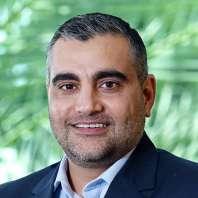
74% of respondents from the energy, oil and gas sector said augmented reality is important for their digital transformation strategy, whereas 62% respondents from the utilities sector said the same.
support decision making enables organisations to achieve operational excellence. IFS software supports all the business-critical processes that facilitate an energy organisation to digitally transform their operations across different assets to deliver business value in an evolving market.
IFS is participating in ADIPEC 2022. The company is showcasing its latest innovations and is demonstrating how it helps energy companies optimise assets and gain better control of projects globally as they chart out new paths through diversification.
DECEMBER 2022 BUSINESS TRANSFORMATION ASIA asia.biznesstransform.com 62 INDUSTRY TRANSFORMATION
PETROFAC LEVERAGING ORACLE FUSION FOR INDUSTRY INSIGHTS
Petrofac implemented Oracle ERP Cloud for its Asset Solutions business unit with deployment underway for the company’s Engineering and Construction business unit.
of clean energy.
BY LEOPOLDO BOADO LAMA
Senior Vice President, Business Applications, Oracle.
Petrofac, a global energy services provider, needed to automate and streamline key business processes across verticals, manage resources more effectively, and better align the business behind its expansion plans. Petrofac implemented Oracle Fusion Cloud Applications Suite to enhance operations and support the company’s ongoing expansion.
RECOMMENDED BEST PRACTICES
KEY TAKEAWAYS
The Oracle Fusion Applications implementation with Petrofac is being managed by Oracle Consulting.
The energy sector is experiencing change at a rapid pace as advancements in technology pave the way for the future of clean energy.
The energy sector is experiencing change at a rapid pace as advancements in technology pave the way for the future
Oracle Fusion Cloud Enterprise Resource Planning, Oracle Fusion Cloud Enterprise Management Planning, and Oracle Fusion Cloud Human Capital Management, will help Petrofac integrate core business processes across its global operations, generate real-time insights, and better support its growing workforce.
Oracle Fusion Applications gives real-time access to critical data, enabling increase in efficiency increase, reducing risk, building a resilient supply chain, and improving employee experience. Petrofac implemented Oracle ERP Cloud for its Asset Solutions business unit with deployment underway for the company’s Engineering and Construction business unit.
With Oracle Fusion Applications, Petrofac can connect operational data across HR, sales, finance, and procurement functions to improve management insights,

With Oracle Fusion Applications, Petrofac can connect operational data across HR, sales, finance, and procurement functions to improve management insights, accelerate decision-making, and realize a faster time to value.
Moving business processes to Oracle Fusion Applications will also help the company eliminate manual processes, enhance supplier communications, boost transparency, and create a single user experience and data model.
accelerate decision-making, and realize a faster time to value. Moving business processes to Oracle Fusion Applications will also help the company eliminate manual processes, enhance supplier communications, boost transparency, and create a single user experience and data model.
The Oracle Fusion Applications implementation with Petrofac is being managed by Oracle Consulting.
With offices in 29 countries, Petrofac’s portfolio spans design, construction, maintenance and optimisation of oil, gas, petrochemical, new and renewable energy infrastructure.
asia.biznesstransform.com 63 DECEMBER 2022 BUSINESS TRANSFORMATION ASIA INDUSTRY TRANSFORMATION IFS
SEVEN SECURITY BEST PRACTICES FOR OIL AND GAS
Kaspersky’s research has identified seven factors that boost industrial security and organisations operating in oil and gas and energy should prioritise these seven.
BY AMIR KANAAN Managing Director, Kaspersky.

Kaspersky’s research identified seven factors that boost the efficacy of industrial security. Organisations operating in the oil and gas, energy industry should prioritise the following:
#1 Have a well-resourced and skilled OT security team
#2 Have an IT, OT convergence plan that includes IoT #3 Have a strategy for managing legacy infrastructure #4 Have mastered internal politics of industrial security management #5 Have implemented security solutions designed for industrial environments
#6 Have a quick response when incidents occur #7 Have staff training and compliance in place
The Kaspersky Industrial Cyber Security, KICS portfolio addresses the oil and gas energy industry’s cybersecurity needs. KICS products are designed to secure the industrial elements of an organisation.
l KICS for Nodes is aimed at industrial endpoints, while KICS for Networks monitors industrial network security.
l Kaspersky Security Centre is a centralised security management solution that orchestrates the security of the entire operational technology, OT infrastructure.
RECOMMENDED BEST PRACTICES
IFS Cloud enhances crossfunctional business operations that helps customers receive a clear view of all assets and enhances customer engagement, enables AI powered self-service and the use AI powered scheduling. Companies want to use enterprise software systems such as enterprise asset management, enterprise resource planning and mobile workforce management to achieve tighter integration and collaboration across different functions.
74% of respondents from the energy, oil and gas sector said augmented reality is important for their digital transformation strategy, whereas 62% respondents from the utilities sector said the same.
KEY TAKEAWAYS
l Kaspersky’s suite of services is also an essential component of the KICS portfolio.
20 or more during the previous year.
40% of oil and gas, chemicals, energy organisations experienced a significant number of incidents, 20 or more during the previous year
According to the recent Kaspersky ICS Security Survey 2022, 40% of oil and gas, chemicals, and energy organisations experienced a significant number of incidents,
From Industrial Cybersecurity Assessment and Threat Intelligence to training programmes for employees and security experts, Kaspersky provides a full range of security services.
DECEMBER 2022 BUSINESS TRANSFORMATION ASIA asia.biznesstransform.com 64 INDUSTRY TRANSFORMATION KASPERSKY
WHY CIRCULAR ECONOMY AROUND PLASTICS STILL DOES NOT EXIST
By 2030, between 50 million and 70 million tons of plastics will be recycled annually, well below the global targets set by companies and governments.
As attention has focused on the problem of plastic pollution in the environment, governments and the private sector have taken steps to promote recycling and reduce plastic waste. These measures include phasing out certain single-use plastics and setting specific goals on plastics recycling. Targets vary by region. But countries in the Middle East are taking significant action towards reducing plastic consumption. For example, in the United Arab Emirates, the government has banned singleuse plastic bags to encourage utilizing reusable products.
In the region’s private sector, companies that make and use plastics are making new commitments to expand the use of recycled and bio-based plastics, reducing the amount of plastic used, and increasing recycling through better design and new investments in infrastructure. There are also many new recycling initiatives and partnerships, along with innovations in new plastic types such as low-carbon plastics made from biomaterials.
Industry users understand that more needs to be done to improve the sustainability and circularity of plastic products, that is, the ability to put materials back into the supply chain, rather than depositing them as waste. In many cases, improving plastic circularity will also reduce emissions, making it essential for delivering on the industry’s decarbonization goals and ensuring the license to operate among growing concerns about plastic waste.
Plastic producers and users know that if concerns are not addressed, they risk facing more stringent regulation and more pressure from customers.
There is a lot of activity underway on recycling
and circularity, but it is still not enough to provide the amount of recycled material that the industry will need. Recycling scenarios, based on current industry efforts and trajectories, suggest that by 2030, between 50 million and 70 million metric tons of plastics will be recycled annually, or 10% to 14% of total plastic consumption, well below the global targets set by companies and governments.
This misalignment between what companies want to buy and what will be available could inflate prices for recycled plastics, as competition heats up for the limited supply. Also, as the feedstock required for producing recycled plastics becomes bottlenecked, plastics producers will need to secure supplies to remain competitive as the market scales. These dynamics add to the uncertainty of the prospects for recycled plastics growth and will hinder investment.
We are seeing three types of actions aimed at accelerating the momentum behind plastics recycling.
Innovation and new technology
One reason that recycling rates are so low is that the technologies involved are not welldeveloped. Recycling rates are higher in categories where technology, infrastructure, and public and consumer engagement are more mature.
Scaling up recycling also comes with challenges, though, as it gets increasingly difficult and costly to increase collection rates while also capturing smaller and less-efficient volumes of used plastic.
Most plastic recycling today is mechanical processing the material but keeping the molecule intact. Chemical processing, changing the chemical structure of polymeric waste, can recycle more plastic. But chemical recycling remains mostly at R&D levels 1 kiloton or less or pilot-program scale 10 to 30 kilotons, focused mostly on polyolefins.
INDUSTRY COMMENT
DECEMBER 2022 BUSINESS TRANSFORMATION ASIA asia.biznesstransform.com 66
BY RAJA ATOUI
KEY TAKEAWAYS
More needs to be done to improve circularity of plastic products, that is, ability to put materials back into the supply chain, rather than depositing them as waste.
One reason that recycling rates are so low is that the technologies involved are not well-developed.
Sustainable solutions will require partnerships that ensure steady supply of renewable materials and a market for recycled materials.
Plastic producers, recyclers, and consumers will need to work together to build support for change.
The misalignment between what companies want to buy and what will be available could inflate prices for recycled plastics.
Pilots help overcome technical challenges, demonstrate scalability and commercial viability, and provide experience that improves process stability and yield. These efforts are expected to scale to commercial levels over the next five years.
Recycling advances aren’t limited to technology, but also extend to collection, sorting, and processing to improve the quality of waste streams—a necessary step to boost recycling rates. Some companies are building up these capabilities. Several material innovations have also been pushed by resin producers to improve circularity, which is now being adopted by plastic converters.
Partnerships and new business models
Scale, sustainable solutions will require partnerships that ensure a steady supply of renewable materials and a market for recycled materials. Supply chain partnerships can help ensure a consistent flow of renewable inputs, which is essential to develop a market. These partnerships need to extend beyond the local initiatives that have emerged in some regions. Plastic users are also forming partnerships.
Offtake agreements are critical to ensure demand for recycled materials as production scales up. These agreements, which ensure delivery of the recycled materials produced, give producers a runway to gain experience, become more efficient, and reduce costs. Typically early offtake agreements are with customers willing to pay a premium for better ESG performance, whether because of individual commitments or local regulations.
Legislation and standards
Plastic producers, recyclers,
and consumers will need to work together to build support for change. They will need to develop better policies for collecting and managing plastic waste, supported by better consumer education and behaviour on waste sorting. They will need to encourage investments and funding for new technologies. They will need to agree on taxonomy as well as standards.
Support is also developing around the world. In March 2022, the UN agreed to develop a treaty designed to end plastic pollution. Details are still to be ironed out, but the specific resolution is likely to address the full life cycle of plastic, including production, design, and disposal.
The outcome, with internationally binding commitments, could be an important step in creating a global environment with investments channelled toward building up recycling infrastructure. Companies and associations, such as the International Council of Chemical Associations, have endorsed the treaty as an important step to address plastic pollution.
Although current efforts are not yet at the scale required, plastics recycling, the use of recycled content, and the use of low-carbon plastics are sure to increase. Companies that prepare now to scale up, connect to high-quality waste streams, and ensure a long-term supply of feedstock can put themselves in a stronger position in sustainable plastics.
Contributed by Mark Porter, Global Head, Chemicals Practice, Bain & Company and Raja Atoui, Partner, Bain & Company.

INDUSTRY COMMENT
Partner, Bain & Company.
asia.biznesstransform.com 67 DECEMBER 2022 BUSINESS TRANSFORMATION ASIA
SOCIAL
MEDIA

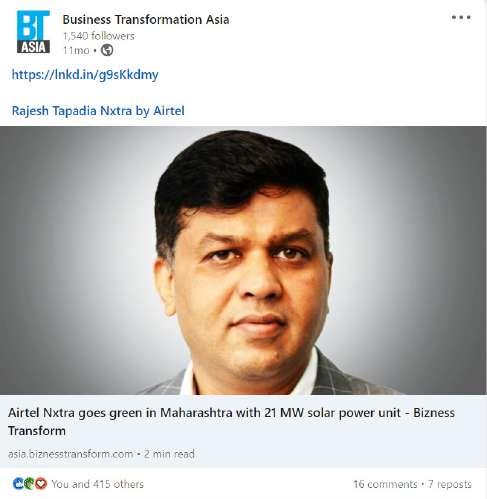
What’sTrending


SOCIALLY SPEAKING
DECEMBER 2022 BUSINESS TRANSFORMATION ASIA asia.biznesstransform.com 68






DECEMBER 2022 asia.biznesstransform.com 69 BUSINESS TRANSFORMATION ASIA

FLIPPING TOWARDS INNOVATION Phone: +1 (732) 794-5918 | Email: hello@opxtechnology.com | www.opxtechnology.com Cloud & Digital Transformation ERP on Cloud Cyber Security Solutions Analytics & Automation AI & ML as a Service YOUR PARTNER FOR

















































































 BY SURESH SAMBANDAM CEO, Kissflow.
BY SURESH SAMBANDAM CEO, Kissflow.

























































































































































